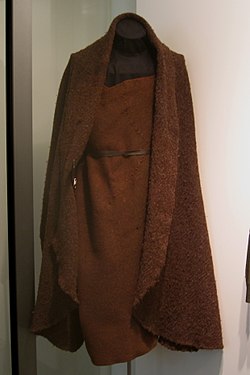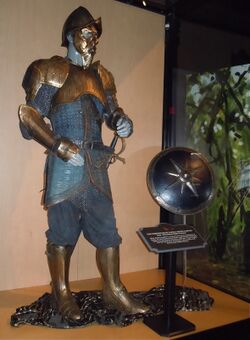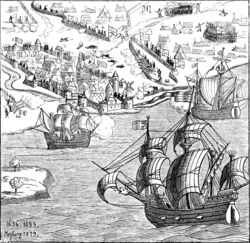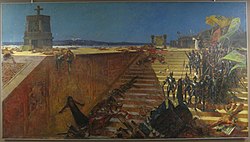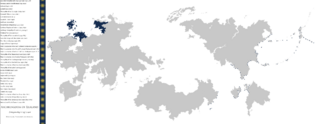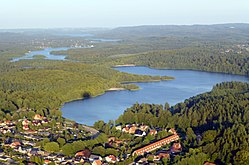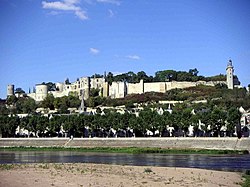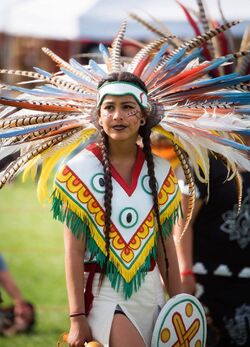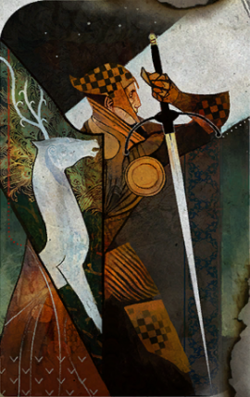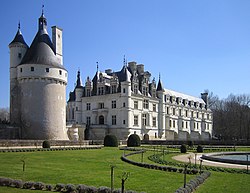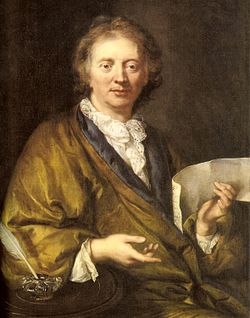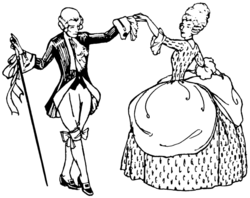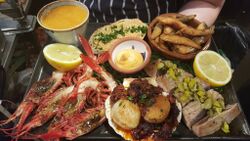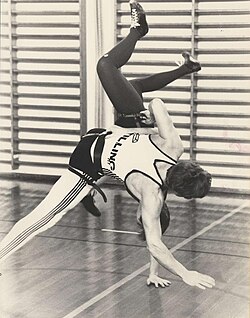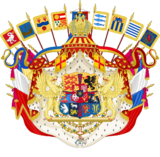Sjealand
The reason given is:
If you disagree with its review, please explain why on its talk page or the Discord server.
Last edit by: Luziyca (talk · contrib) · Last edited on Wed, 12 Aug 2020 20:12:06 +0000
Sjealandic Realm (Archkingdom of Sjealand) | |
|---|---|
| Motto: Tro og enighed til Asgård falder Faith and unity till Asgård falls | |
| Anthem: Poul-Erik Nielsen Norden, mit fædreland | |
 | |
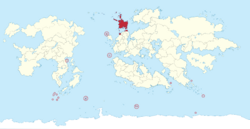
| |
| Capital and | Asgård Stad |
| Official languages | Tynic |
| Recognised national languages | Tynic Lauragán Øic |
| Recognised regional languages | Anglish spoken by significant minorities in southern Sjealand and the Tårnøerne islands. |
| Ethnic groups (2014) | Tynics (79,2%) Nahuas (8,3%) Lauragáns (5.1%) Ambrosians (4,4%) Øicers (3%) |
| Demonym(s) | Sjealander |
| Government | Constitutional Monarchy |
• Archking | Frederik VI |
| Erik Valmund | |
• Gudstaler | Alfhild Ingvarsdatter |
| Legislature | Rigsdag |
| Landsting | |
| Folketing | |
| Consolidation Sjealandic Proclamation of Unification (November 5, 756) | |
• Halmsfeld Heresy | 4th of July, 1261 |
| 21st of December, 1324 | |
• North Sea Realm | 1412 |
• Ambrosian War of Liberation | 6th of May 1691 |
| 1971-1972 | |
| Area | |
• Total | 696,241 km2 (268,820 sq mi) |
• Water (%) | 11.4 |
| Population | |
• September 2016 estimate | 86,657,434 |
• September 2016 census | 86,657,434 |
• Density | 124/km2 (321.2/sq mi) |
| GDP (PPP) | 2014 estimate |
• Total | $4,96 trillion |
• Per capita | $57,296 |
| GDP (nominal) | 2014 estimate |
• Total | $3,96 trillion |
• Per capita | $57,296 USD |
| Gini (2014) | 27.5 low |
| HDI (2014) | 0.954 very high |
| Currency | Rigsdaler (₹) (RGD) |
| Time zone | UTC+1 (TZ5 (Asgård Standard)) |
| Date format | dd-mm-yyyy |
| Driving side | right |
| Calling code | +45 |
| ISO 3166 code | SJE |
| Internet TLD | .sj |
The Archkingdom of Sjealand (/ˈSjɛalandːrk/;![]() Tynic: Sjæland[Sjæland]) commonly known as Sjealand, or the Sjealandic Realm, is a sovereign country covering the most of the Sjealandic Archipelago in Aldinea. In addition to the main island of Sjealand it covers two mainland exclaves on the mainland, as well as several minor islands and islets in the Sea of Njord and the Tynic Sea. In addition it maintains a large amount of Overseas territories across Midgard. Sjealand shares its Aldinean land borders with Thy, Kreissau and Valmark. The exclave of Talong in Farvara gives it a small Farvaran land border with Narong. Apart from its land borders it shares maritime borders with Vannin, Kreissau, Thy, Valmark, Hinsey and Ambrose. Its coast is surrounded by the Sea of Njord to the east, the Sjealandic Channel to the south, the Langeyan to the west and the Ambrosian Sea to the north, giving it the second longest coastline in the world, and the longest in Aldinea. With an area of 696,241 square kilometres (268,581 sq mi), Sjealand is the fourth largest state in Nordania. It has a large population that was measured as 86,657,434 in 2017.
Tynic: Sjæland[Sjæland]) commonly known as Sjealand, or the Sjealandic Realm, is a sovereign country covering the most of the Sjealandic Archipelago in Aldinea. In addition to the main island of Sjealand it covers two mainland exclaves on the mainland, as well as several minor islands and islets in the Sea of Njord and the Tynic Sea. In addition it maintains a large amount of Overseas territories across Midgard. Sjealand shares its Aldinean land borders with Thy, Kreissau and Valmark. The exclave of Talong in Farvara gives it a small Farvaran land border with Narong. Apart from its land borders it shares maritime borders with Vannin, Kreissau, Thy, Valmark, Hinsey and Ambrose. Its coast is surrounded by the Sea of Njord to the east, the Sjealandic Channel to the south, the Langeyan to the west and the Ambrosian Sea to the north, giving it the second longest coastline in the world, and the longest in Aldinea. With an area of 696,241 square kilometres (268,581 sq mi), Sjealand is the fourth largest state in Nordania. It has a large population that was measured as 86,657,434 in 2017.
Sjealand is constitutional monarchy with a parliamentary democracy, however the monarch still retains a considerable amount of power including votes in the Sjealandic Rigsdag. The current ruling monarch is Archking Frederik VI who suceeded to the throne in 2012 after the death of his father Håkon IX. The capital of Sjealand is Asgård, a global city and financial centre with an urban area population of 7.5 million, it is consistently ranked as one of the most livable cities in the world and is regarded as the premier city of the arts, famed for its prestigious academies and marvelous architecture. Other major urban areas in Sjealand include Götensholm, Holmegård, Miklagård, Nordvakt and Frederikssted.
Sjealand consists of nine sovereign realms: Asgård, Vanaheim, Midgård, Jotunheim, Niflheim, Muspelheim, Helheim, Alfheim and Svartalfheim. Additionally there are three autonomous communities; the Thanedred of Tårnøerne, Nareyan Commonwealth and the Duchy of Randes. Each realm has a devolved government and further subdivided into Amter which are further subdivided into Sysler.
Sjealand emerged in the early 900's as a seafaring state, raiding nearby countries for valuables and most importantly thralls, a valuable commodity in Sjealandic society. However by the 1100´s this policy of raids decreased as trade with Hitotami had begun after the First Hitotamin Expedition and soon Sjealandic naval focus shifted to dominating trade with Farvara and excluding other Aldinean nations from the area. This as well as a mutual Hitotamic-Sjealandic policy of giving eachother preferential treatment over other traders soon developed into a quasi-monopoly, leading Sjealand to effectively be the only Aldinean state able to trade with Hitotami and giving them a significant edge in pan-Farvaran trade. This however proved detrimantal as a series of invasions by the Vallic states in the wake of the Halmsfeld civil war led Sjealand to be confined on land by the Vallish. Further naval expansion was sought and after the Despenser War between Sjealand and Ambrose ended in 1324, a personal union was formed called the Kingdom of the Two Daughters, which after 1334 also included Hinsey and for a period of 100 years also the Principality of Vöhlen.
While Ambrose seceded from the union, effectively disbanding it in 1691, the 1700´s became the golden age of Sjealand, as Farvaran and Sirklantic trade proved even more profitable, leading to a population increase and a boom in construction. The arrival of the 1800´s changed that, first in 1828 with the introduction of democracy in Sjealand, and later in 1861, with the disastrous Great War of the North which saw the independence of Vestmannaland for a period, the cession of Tårnøerne to Ambrose and Hvidland (Seemark) to Kreissau. Sjealand was a prominent power during the Aldinean Age of Imperialism and spearheaded the division of Sirklant until eventual decolonization. These tremors were also felt in Vakal during the Aferi Revolutionary War. Sjealandic influence can still be observed in Aldinea and beyond still however, with Tynic being the lingua franca of international diplomacy, as well as with Asgårds position as the cultural capital of Aldinea.
Sjealand is a developed country and has one of the worlds largest economies, both by GDP and purchasing power parity. It is a very high-income economy and has a "very high" Human Development Index, ranking one of the highest in the world. It was one of the primary mercantile nations in the world, and Aldinea foremost naval power for several centuries. It remains one of two regional powers in Aldinea and is also one of the worlds principal great powers with considerable economic, cultural, military, scientific and political influence internationally. It is a recognized nuclear-power state. It is a member of the Council of States, the Pact of Asgård, a founding member of the Tynic Commission, the Northern Sea Defense Organization, the Aldinean Space Agency and the Aldinean League as well as a signatory of the Whaling Treaty and the High Seas Treaty.
Etymology
It is generally agreed that the current Tynic name for Sjealand, Sjælland, comes from the Old Haemaslandic Sálland, a portmanteau of the words Sál meaning Soul and Land meaning Land. The use of this word is not seen in any archeological evidence from before the iron age migration of the Old Haemaslanders. Before the 550's BCE the word Deupazkustuz was primarily used by the inhabitants of Sjealand, Deupazkustuz meaning deep coast, referring to the prevalence of Fjords in Sjealand and the prevalent belief in bronze age and early iron age Sjealand that land and sea lay in constant strife.
The beginning of the migrations in the 350's BCE and onwards significantly changed this belief according to the foundational myths of Ríkr Átrunaðr and supported by archeology, a mass migration led by 4 individuals, in Ríkr Átrunaðr identified as Berkana, Kauna, Ansur and Vunjø arrived in the southern part of Hvidlands Tynic Coast with the reported leaders of the migration deeming this the promised land. In Ríkr Átrunaðr it is then stated that Stórrheðrinn elevated the four leaders souls to godhood, leaving their bodies back to be burned as the first Átrunas. As such in honour of their former leaders, now gods, their followers named their promised land Sálland or Soul-land. Archeological and written evidence from emerging rune-stones partly support this, as older versions of Ríkr Átrunaðr indeed are accounted for in the late 300's BCE Sjealand, with the name Sálland being seen on the Verrild Runestone located in central Yngsvilla, which is deemed by Átrunas as the foundational decree of Ríkr Átrunaðr.
With Valdemar I's unification of the petty Sjealandic kingdoms and his ascension as Archking of the united realms that today make up Sjealand in 756 he decreed that the new realm would be named Sálland, in a move likely made to please the Guðstalar of Yngsvilla and the religious hierarchy of the faith, trying to pass off his unification as Stórrheðrinn's will made manifest by his hand. The first recorded use of the name outside of Sjealand as a reference to the country is found in the 9th century Jorvish chronicle Grutte skiednis fan 'e hartoch Esegar en syn ryk which says
In the dark of night, as if phantoms, came 8 longships from the Archking of the foreign land Sálland, carrying men-at-arms with bloodthirst in their eyes. So great was the misery as these warriors plundered the nearby hamlets and abudcted their people to a life of enthrallment.
The name would eventually shift over time as the Sállandic language did, with the Tynic language taking position as the prime language in Sjealand, and as such the newer Tynic spelling and pronounciation of Sjælland would become more used.
History
Prehistory
The Sjealandic Peninsula became ice-free around 11,000 BCE, at the end of the last ice age. This is generally seen as the beginning of the Tynic Stone age, with the Upper Paleolithic Wittburg culture , giving way to a suceeded line of mesolithic hunter-gatherer cultures by the 7th millenium BCE. The first permanent residents in modern day Sjealand, the paleolithic Wittburg culture emerged in modern day Jorland and Lothican and their tundras, following the reindeer who grazed in the plains of Nordania and Sjealand. Tribes in this culture hunted over vast territories and lived as nomadic hunter-gatherers in teepees, following the seasonal migration of reindeer and other animals. With the retreat of the ice around 11,000 BCE and the rapidly warming climate the new Austevoll culture emerged in North-western Sjealand, with the new climate allowing for the hunting of other substantial hunting game animals and the limiting of hunting grounds to smaller areas, allowing them to be the first to settle on a semi-permanent basis in an area while still remaining nomadic in the area.
For the next three-thousand years nothing much changed until the 7th millennium BCE. A culture called the Nillas culture now lived in the Sjealandic tynic coast was living mostly in changing seasonal camps along the shores and close to the now thriving forests. Utilizing fire, boats and stone tools, this culture was able to fend off much competition from other cultures and was able to spread out over quite an area in Sjealand, following the salmon runs through the Sjealandic rivers and moving between Northern and southern Sjealand during winter and summer. This culture generally followed traditions similar to their neighbours in Swastria and Jorland and Lothican.
The 6th millenium BCE saw an even warmer period in Sjealand, which was warmer and more humid than today, with sprawling temperate broadleaf and mixed forests covering almost all of the country, filled with large animals like aurochs, wisent, moose and red deer, which the existing tribes of the Kongeelven culture hunted for food. The Tynic coast was also heavily utilized for the hunting of marine animals and fishing in the rich shallow waters. The Kongeelv culture gradually changed as they were taught pottery from neighbouring tribes in the south, who had begun to cultivate the land and keep animals. These traditions were adopted by the local Sjealandic cultures, who gradually began chopping down the forests and planting farms, becoming part of the megalithic Tynic Farm Culture. The Tynic Farm Culture gradually supplanted the hunter-gatherer cultures of Sjealand, even spreading out to sea and sailing to Vestmannaland and the Tårnøerne, where they spread the culture. They were however themselves overrun by new tribes around 2800 BCE, who spoke the predecessor of Proto-haemaslandic, it is from them, that the oldest reconstructed name for Sjealand, Deupazkustaz has been made. These new tribes were particularly adept at creating weapons, especially boat-shabed battle-axes. They were cattle herders and with them most of the northern Tynic entered the Neolithic. Ultimately, the Bronze Age would usher in a time of cultural advance in Sjealand.
Bronze Age
Very few towns or substantial villages are known from the Sjealandic bronze age period, most settlement consisted of single farmsteads, much like the ones of iron age Sjealand. Ususally a farmstead would consist of three-aisled longhouses along with additional four-post built structures. Some larger farmsteads could have up to three longhouses, with extended family or thralls thought to be have been the additional residents. Meanwhile towns and villages were generally also made up of smaller two-aisled long-houses laid out on a grid-street and usually surrounded by a palisade wall. These towns were usually headed by a chieftain who also acted as the religious head. Usually the towns would have nominal control over the neighbouring farmsteads. Settlements were geographically located on higher ground, and tended to be concentrated near the sea, especially the Tynic. The roads leading out of the settlements would be lined with burial mounds and cemeteries, which would often have elaborate art carved in stone, with interments including oak coffins and urn burials much like later Sjealandic societies. The older traditions of hunting and gathering was almost abandoned in favour of settled agriculture and the keeping of domesticated animals. The most common plants farmed were wheat, millet, and barley while the most common animals were cattle, followed by sheep, goats and pigs. Coastal settlements also fished, with fish and shellfish being important sources of food. Some inland settlements near the larger forests also hunted in the forests with deer, elk, and other wild animals being attested to. There is evidence that Oxen were used as draught animals, domesticated dogs were common, horses were rarer and probably status symbols. Chariots were used by the upper class of the society, but were not used in war, rather as a means of transportation and as a status symbol, much like horses.
The tin, copper and gold used in Sjealandic and Tynic Bronze Age cultures came primarily from the area itself, with the Sydfjeldene and Fjorddalene mountains being especially rich in the minerals. Wide-spread trade can be attested to, and most goods were crafted locally, with the craftmanship being particularly good, especially in the modern Asgård Realm. Locally produced wool and leather were the primary materials used in clothing, with the most common type of clothing being a knee-length gowns with one or two shoulder straps. Men wore cloaks around their shoulders; there are even artifacts of woolen underwear that men in colder climates wore. Med would wear caps on their head while women would make use of sprangs. Razors found indicate that men were clean shaven and most people wore shoes. In cold climates, the fur was left on the skin and put on the inside of the shoes to help keep men warm. In other areas, shoes were intricately designed; the fur was removed with a razor and tweezers, then pieces of the shoe were sewn together. There are also records that indicate men's shoes had shoelaces.
Even though the culture had no written language, rock carvings and cave paintings are common from this period, with many rock carvings from this period depicting ships and with many large stone burial monuments known as stone ships. Combined with the shallow waters of the Tynic and the capabilities of the Hjortspring boat type suggest that the bronze age cultures in Sjealand were highly maritime and that ships and seafaring played an important role in the culture at large. The Hjortspring boat type, a long slender canoe, was both used for warfare, fishing and trade, with some found close to modern day Asgård as remnants from a large naval raid in the area.
The religion of the area was generally focused on a strong sun-worshipping cult, with the sun along with the boat being one of the most common rock carvings found. It is indicated that the people of bronze age Sjealand saw the sky as a mirrored ocean, and the sun was carried over this ocean in a large ship. Archeologists have proposed that this sun worship is continued in that common depictions of Stórrheðrinn as the Northern Sun though no excact proof has come from this yet. A pair of twin gods are believed to have been worshipped, and is reflected in a duality in all things sacred: where sacrificial artifacts have been buried they are often found in pairs. Sacrifices (animals, weapons, jewellery and humans) often had a strong connection to bodies of water. Boglands, ponds, streams or lakes were often used as ceremonial and holy places for sacrifices and many artifacts have been found in such locations.
Pre-unification Sjealand (250-756)
In iron age Sjealand traces indicate that the dead were cremated and their graves clad with many burial goods. Contact between the people of Sjealand and the rest of the Sea of Njord and Tynic Sea can be attested to from the first century CE, and cauldrons from Ferhard were often used as burial urns, while amber jewelry from modern day Ambrose has also been found. It is indicated that Sjealand developed its early runes on their own, and by the 600's these runes would have begun evolving into the modern Sjealandic alphabet, the oldest known Sjealandic inscription dates to the early first century CE. During the iron age Sjealand saw an increase in settled areas and population as small city states sprung up near river valleys in Sjealand. This can also be seen in many place names as root names such as nes, vik, and bø ("cape," "bay," and "farm"), are of great antiquity, dating perhaps from the Bronze Age where as the earliest compound names with the suffixes of vin or hjem, date from after the first century CE.
The 5th century holds one of the richest periods in pre-unification Sjealand, and many graves belonging to tribal chiefs and leaders of city-states have been found containing richly decorated weapons and treasures. Cities in this period also saw an increased use of defences and many small settlements began using palisades or constructing hill forts on precipitous rocks for defence. The average farms of this period were generally homesteads, with the family living in a long house of around 46 metres in length with the family, the thralls and the cattle living under one roof.
These homes belonged to small clan-based groupings called Bygder, which generally consisted of a valley or a fjord, these would in turn pay taxes and supply leidang to the ruling petty king. Governance of these small states were done through things (local or regional assemblies) for negotiating and settling disputes as well as electing the king. Most of the petty kingdoms of this period were elective, with the local clan chiefs voting for the one they saw as the best possible leader, though the kings generally came from the same family, who usually came from the oldest and largest bygder with the best farms. In times of emergency these petty kingdoms united to form even larger units: assemblies of deputy yeomen from several regions. The collective petty kings would pick a war-leader who would take command of a combined leidang fleet or army and either lead it to war or on a thrall raid.
In the early 500's pressure from Wampanoak states across the Great Belt led the Kings of Skargasdal, the Skjöldung dynasty, to adapt to a more aggressive foreign policy towards the other Sjealandic states, successive lines of kings gradually took control of all territories west of the Fjorddalene mountains. A number of city-states and petty kingdoms near the border region felt threatened by the expansion, seeking the protection of the Götish Kingdom, which invaded Skargasdal in 621, leading to a catastrophic defeat, as the majority of the Götish army froze to death trying to cross the mountains. In the following summer King Sigtrygg Skjöldung led an army of 5000 men across the mountains, razing the Götish capital to the ground. This conflict is generally considered the beginning of a century long period of instability and conflict on the Sjealandic peninsula as Skargasdal saw rapid expansion.
Through successive conquest, inheritance, elections and negotiated annexations, the Skjöldung kigns gradually took control of most of Sjealand, with only the petty kingdom of Herlsga standing in the way. Valdemar Skjöldung, the youngest son of the ruling king lead the leidang army deep into Herlsga besieging the capital Rodsjö and killing the ruling king of Herlsga. Eventually his military might and ruthlessness caused many of the things of newly conquered territories to support his bid for the crown, as he was seen as a change from his siblings. Eventually Valdemar had two of his brothers exiled and killed one himself in a duel, making him the sole male heir of his father, who died in 755. The following year, now as King of Skargasdal, he lead his army in a final push against remaining Herlsgan resistance, which he crushed at the battle of hafrs, leading to his coronation in 756 as Archking of Sálland, a move he did to please the clergy of Ríkr Átrunaðr, who blessed his reign.
Early Middle Ages (756-1169)
From unification and onwards the Sjealandic realm, now stretching across all of modern day Sjealand and much of Swastria and Eibenland, became the primary source for the thrall raids that plagued much of Nordania. The 782 leidang called by Archking Erik I is widely regarded as the beginning of this period, as a fleet of 11 ships descended upon Buchart in modern day Ferhard, plundering goods and abducting men and women as thralls. This time period between 782 and the early 1100's was characterised by expansion of royal Sjealandic influence and the creation of a large thrall caste in Sjealandic society, with thralls being given facial tattoos depending on their work. A Sjealandic leidangs-fleet first landed in Vestmannaland in 801, leading to heavy skirmishing between the Sjealanders and the natives. Sjealandic longships were exceptionally adept at navigating the Tynic and Sea of Njord, carrying the raiders across most of northern Nordania, even upriver in Vasturia into Wosrac and Cradebetia, where thrall-raids can be attested to in the 900's.
Ragnvald I, great grandson of Valdemar I, ascended to the throne in 849, proving an incompetent ruler, who generally proved unable to maintain the vast holdings of the realm, leading it to devolve into a quasi-feudal society as local nobles disobeyed the courts orders and the Archking himself too weak to command even his hird. In 852 his brother Hartved, supported by the Duke of Austevoll launched a palace coup in Skargas, with Ragnvald and two dozen retainers fleeing to Vestmannaland. While Hartved styled himself Archking he was opposed by two other claimaints to the throne, Erik Ynglinga (later known as Erik II) and Igleman of Sortvand. Igleman, a grandson of Erik I enjoyed much support with the northern Fjeldran and Brattan nobility, as himself was raised there. Erik Ynglinga, the grandson of Valdemar II through his daugher Freja, was on the other hand only 9 at the time of the coup, and was seen by many as a weak player. But he enjoyed the support of of the de Bonde family, the second most powerful family in all of Sjealand, this support would prove vital as Erik emerged victorious from the 9 year long civil war, defeating Hartved, who had murdered Igleman at a supposed feast to negotiate a truce. The Skjöldung Dynasty had now been suceeded by the Ynglinga Dynasty.
Throughout this time the clergy of Ríkr Átrunaðr had remained, to a degree, politically neutral, but during the civil conflict all claimants had sought the support of the clergy to grand their claim legitimacy. The Gudstaler now found herself as a key player in the political sphere, and Erik II showed her his favour by granting the office of Gudstaler several valuable Earldoms in northern Sjealand who would be ruled by Prince-Godes. The new political power also served as a catalyst for a final true codification of the faith into a series of books, chief among them the Chant of Light, whose four canticles would be the foundational stones of Ríkr Átrunaðr. The Gudstaler used her influence with the court to launch the victorious Andreas Sunessons War in 943 against Sassau.
From 960 and into the 1100's the country remained at peace, except for the minor Bandits War in Eibenland, and this peace saw general prosperity bloom as several cities grew across Sjealand. During this time there was no capital, and the court moved from several castles across the country to visit the local Things and govern. The large entourage that the court brough led to an increase of prosperity for the areas visited, and soon several trade leagues were founded in Sjealandic coastal cities. From 800-1100 the population increased from 1,050,000 to 2,400,000, resulting both in more land being cleared and the subdivision of farms. While some degrees of feudal rule were introduced into Sjealand, namely the use of the nobility as local governors, serfdom was never introduced, as the amble amount of thralls lead to no shortage of workers and generally all farmers were free men, who enjoyed more freedom than serfs in Swastria or Ambrose.
Sporadic contact with Boreans and Tuthinans especially had introduced Sjealanders to goods from Borea and the Nordanian markets were hungry for more, so in 1162 the Archking Erik IV began preparations for an expedition that would depart for Tuthina in 1169, which it did, arriving the same year and signing several beneficial trade-treaties with the Imperial Court, leading to the beginning of the Sjealandic Trade Empire and the foundation for Nordano-Borean trade.
High middle ages (1162-1474)
Throughout the late 1100's and 1200's Sjealand had aquired several possessions on the Tynic Shore with several possessions in Hethland seing as sizable Tynic migration, especially to the areas around Hageborg. In addition the Archkings had taken control over the Gunneyjar Archipelago, which was annexed into the Vanaheim realm. In the new western provinces, the Sjealanders promoted their faith. Increasingly wealth from trade, especially those connected to the Northern Sjealandic arms trade in Nordvakt steel were creating a rich urban upper class in the growing Sjealandic towns and cities. The Archking increasingly took control over state affairs with a centralized administration and local representatives. However this increased interconnectedness also proved a thorn in its foreign policy as it became embroiled in conflicts in Vasturia which severaly drained state coffers.
Erik V who suceeded his father Erik IV in 1172 proved an authoritarian ruler, and argued heavily with the clergy attempting to impose his own will on the faith. In addition to this he lead a reign of terror on the nobility, who would often have their lands confiscated on the threat of death by the Archking. Unrest grew across the country as more and more people grew weary of his rule, and several realms were in open defiance of the Court, which tried with harsher measures. In 1200, in an attempt to reign in his unruly subjects, brought in Fírinnist priests and mercenaries from Vasturia, attempting fully depose the Atrunan clergy. In anger against this the Gudtaler called her own liege levies and marched on the capital, beginning a 61 year long civil conflict in Sjealand between the Monarchy and clergy along with the extinction of the male Ynglinga line at the Battle of the Ice. In Sassau local noblemen had been watching the conflicts in Sjealand with hungry eyes and themselves instigated several border incursions into Sjealandic territory until a full fledged battle against monarchists in southern Sjealand prompted the King Dietrich to launch a full fledged invasion of Sjealand in 1250. Initially the Swastrian incursion was ignored as the pretenders sought to deal with the civil war first before turning on the Swastrians, however the Swastrians excellent use of cavalry and powerful charges smashed through southern Sjealand, and within 2 years all land south of the Svasterelven had been lost and by 1256 the Swastrians had taken all land south of Malmbäck and east of the Sydfjeldene.
Knud IV (Knud Lyksborg, who had ended the civil war by marrying a daughter of the Ynglinga line managed to stop the Swastrians in 1278, but Sjealand had lost over half of its pre-1200 territories and the Sjealandic leidang army had proven itself insufficient. Knud, along with his successors Svend II and Magnus I would drastically overhaul the governance of Sjealand, centralizing power with the Archking and an army of bureaucrats while enlisting the help of Borean administrators to overhaul the tax-collection. In addition the military was overhauled, and while noblemen would still have to supply the royal army with conscripted levies, the Monarchy began the establishment of a professional army that would be staffed with career soldiers, loyal to the Archking. Thanks to tolls collected in the Tynic Sea and money gained from tax collections, the army was eventually able to be equipped with modern brigandine armor, morion helmets and polearms. A large percentage of the army consisted of women, as earlier wars had killed many men and the large merchant marine also drained resources of men. Because of the patriarchal swastrian society's mockery of Sjealands women soldiers many of the soldiers began adopting facial masks, first as armor and later in the shape of male faces to ridicule the assumption that Swastrians would only fight men.
The army's first test of strength came in in 1302 as Archking Svend III led an army of 12,000 professional soldiers and 20,000 levies into the Swastrian occupied parts of Sjealand. The well-trained soldiers tore through the Swastrian armies, retaking much lost land and sacking Wittburg, which was burnt to the ground. This established much of the modern day eastern Swastro-Sjealandic border. The new armies managed to cement their position in the early 1300's and in a period of 40 years, the House of Lyksborg united Ambrose, Vestmannaland and Vasturia into one large personal union. Attempts were made several times to work out a similar constitution for the four member states, but resistance from Vasturian burghers and Ambrosian noblemen proved the effort unfruitful and Vasturia severed ties to the union in 1432.
The beginning of the 1300' also saw the town of Ager renamed to Asgård and cemented as the capital of the Archkingdom by Valdemar V, bringing much wealth to the city. This proved important for the Tynic Sea, as more and more trade moved into the region and the burghers of Asgård grew which, buying their first Nahua thralls in the early 1400's, leading to the long practice of chattel slavery in Sjealandic society. The increased wealth also led to the incorporation of several trade cities down the Zaminthar peninsula, the Kwan'they archipelago and dozens of treaty ports and trade stations in Lahudica along with several victories against the Swastrians.
Late Middle Ages (1474-1572)
The late 1400's and early 1500's saw a period of unbridled Sjealandic expansion overseas as the Tuthinan Company and similar trade companies expanded their economic ventures to Tinza, Senria, Xiaodong, Min and the states of Akai, especially Lazinato. Several smaller naval conflicts were fought in the region but generally the Sjealanders in East Borea enjoyed a fair amount of peace, allowing for great prosperity to return to Sjealand. This was the period when the wealth of Sjealand really began to grow. Its dominance in both the Tynic and Sea of Njord allowed it to fight back most privateers and ensure smooth trade and a flow of goods to the Sjealandic court. Slowly Sjealandic food, fashion and mannerisms would diverge from those of their neighbours. The country, and the rest of Nordania, would see some setbacks as the plague epidemic called the Hollowing Rot hit the continent in 1517, striking in Asgård first. The effect from this was a general decrease of governmental and noble power in Sjealand, which several poorer peasants and citizens attempted to use for their own betterment, petitioning the Archking for more rights. The denial of these were not well recieved, and when a noblewoman in Nordvakt executed a peasant woman for stealing food peasants and poor in all of Northern Sjealand rose in revolt, burning hundreds of manor homes and castles before brutally crushed by the Royal Army. As the epidemic died out Sjealands major cities would experience a migrational boom, and many people would migrate to Sjealand from its possessions, notably Ambrosians, who settled in Asgård in large numbers.
While Ambrose remained in a personal union, a succession of reforms, passed by Olaf II in 1506, would see Vestmannaland directly annexed into the Sjealand as the 10th realm, the Viceroyality of Vestmanheim. This annexation would also see changes to the realms themselves, as the court attempted to curtail the power of nobility in local government, and generally saw the nobility's power heavily curtailed in favour of bureaucrats and merchant-princes. The relative wealth of their existing possessions and the gifting of stocks in several companies helped to prevent noble unrest and most noblemen and women generally accepted the changes, involving themselves more in Sjealands mercantile ventures along with its military operations in Ambrose where tensions with the Vasturians and Wosracans were flaring up. A general growth in agricultural production thanks to innovation in the field also significantly increased the nobility's wealth along with raising the average life expectancy in Sjealand.
The death of several prominent noblemen in Hethland and Wampanoak saw Sjealandic possessions in the area signifcantly enlargened as Sjealand became an arbiter as the local lords began a long process of dividing the rich northern lands, leading to numerous wars. While possessions were technically part of the Hethlandic Kingdom, which the Sjealandic monarch held as a feudal fief, in practice they functioned as possessions of Sjealand. In the middle 1500's Sjealand engaged in a series of maritime skirmishes with the Erkemeni Empire, supported by Lazinato. These came about mainly as a result of Sjealand acquiring ports on Lazinato which the Erkemenis felt threatened by. Both sides made extensive use of local privateers from Akai and eastern Nautasia. Involvement with Sassauer politics also reached their highest in this period as Sjealand backed both sides in the Sassau civil war, leading to a lessening of threat from the Sassauer court. This led to Sjealand enjoying a generally unchallenged position as the dominant power in Nordania and as an arbiter of peace and disputes among the nations on the {{wp|North Sea|Sea of Njord.
The 1560's and 1570's saw two great conflicts in Sjealand, first all out war broke out between the Erkemeni Empire and Sjealand over trade rights and other disputes, with 13 years of on-off nautical warfare ending in a stalemate and the Erkemenis allying themselves to Sjealand. On the home-front however many thralls had seen the prosperity the rest of the country enjoyed while they themselves enjoyed little to no comforts. Especially the thralls working in the mines suffered harshly, with most workers dying within a year in the terrible conditions. Several minor thrall revolts along with a major one in 1564 rocked southern Sjealand, with many atrocities commited by the Sjealanders against their thrall population and the purposeful starvation of many working thralls to root out the leaders of the organization responsible for the revolt, Teotl. Over the next 200 years the organization would stage several revolts of thralls and also commit acts of terrorism and assassinations, as they tried to liberate their brethren.
Age of Exploration (1572-1712)
Finding its sources of naval supplies in Aurega under threat from increased conflicts in the area, Archking Håkon I decreed that an Auxiliary Corps of 2000 cavalry and 14,000 infantry be sent to Aurega to serve as mercenaries for the states aligned with Sjealand in the region. Led by the Crown Prince (future Archking Valdemar VII) the corps spent 8 years in Aurega from 1588 to 1596, managing to secure additional new alliances for Sjealand and participating in several prominent battles, in which the Sjealanders fought bravely.
This was part of a general Sjealandic strategy of securing alliances and foothold on the Valí peninsula, with which it could further its already vast holdings. Ambrose, and specifically Elsbridge saw great prosperity in this period as the Archkings sought to increase the infrastructure in the Kingdom, so to boost their military capabilities outside of Ambrose. However the Ambrosian rural aristocracy did not see this in a good way, as the Sjealandic developments also brought more Tynic speakers, who were primarily religiously Atrunean to Ambrose, which the conservative land-owners saw as a challenge to the status quo. A baronial revolt in 1601 was only narrowly avoided by a compromise between the Sjealandic Viceroy and the Ambrosian clergy.
The 1603 invasion of Swastria by Sjealandic forces further served to divide the North Sea Realm, as Swastrian copper had been crucial in the blossoming economy of rural Amborse. While the war was a succes, the Swastrian states having to pay a war indemnity of 1 million silver Florins to Sjealand, the economic consequences for rural ambrose were great, many began seeing the Sjealandic court as working against the common interests of the realm and only for their own and Sjealands. Attempting to better the situation the court began diverting more resources to the loyalist areas of Ambrose, most importantly through the financing of the Ambrosian-Conitian Company, the trade company that would lead the charge in Sjealandic chartering of Conitia.
In 1613 a coalition of Swastrian, Eibenlander and Lothican forces entered Sjealand through the Tynic, the Sjealandic navy being occupied by conflicts on the western coast of Nordania. Over 35,000 soldiers landed near Frederikssted and marched towards Asgård, pillaging the country-side and besieging the capital. While the force was beaten back within the year and the Swastrian fleet that ferried them sunk, the invasion was the culmination of a conflict between the Swastrian states and Sjealand over dominion of the Tynic, which would lead to harsh reprisals in the future and a strengthening of the Sjealandic chokehold on the Tynic Sea.
The aging Archking Håkon II launched a war against Wosrac in 1641, wishing to emulate his forefathers and create an empire spanning Ambrose to Aurega. The War of the Tundra was characterised by Sjealandic military victories but an inability to take any meaningful territory because of the harsh weather and general mismanagement from the Sjealandic generals who were unused to fighting in the harsh north, something noted by their Ambrosian colleagues.
The Golden Years (1712-1829)
Century of Blood (1829-1931)
Modern History(1931-Present)
Geography
Located in north-western Aldinea Sjealand occupies a geostrategic position at the mouths of the Sea of Njord and Tynic Sea, as well as the southern coast of the Sjealandic Channel, positioning it centrally at two nautical choke-points. Outside of mainland Sjealand, the realm includes the Tårnøerne Islands in the middle of the Sea of Njord, and the Værøerne archipelago in the Langeyan Ocean. Many of the larger islands are connected by bridges, both to each-other and to the main island. THe Vilderøe bridge connects Hjaltland and Vilderø, the Stadsbukt-Bridge connects Birka and Hedeby and the Liniavik Bridge connects the Austevoll peninsula with the island of Liniavik. Plans have also been drawn up for a bridge between the island of Sjealand and the Viceroyalty of Alfheim on the mainland, across the Gyldensund Great Belt. Ferries or small aircraft connect to the smaller islands. The five cities with populations over 1,000,000 are the capital Asgård and Homlmegård in the Asgård Realm; Götensholm in Midgård; Homlmegård in Vanaheim; and Nordvakt in Muspelheim.
Mainland Sjealand can be subdivided into five distinct geographic regions, Fjorddalene, Tusindøerne, Højlandet, Søhøjlandet and Østerheden. The Fjorddalene (Fjord Valley) region consists of the mountainous coastal and inland areas, primarily situated in the Jotunheim and Muspelheim Realms, but also in the Niflheim. The area is distinct for its deep fjords, surrounded by high mountains, and as such the coastal areas of the Fjorddalene can be quite warm, thanks to the warm water currents coming in from the Langeyan Ocean. This however also makes the region subject to harsh storms and hurricanes, as well as occasional floodings, though not as prevalent as in the Tusindøerne and Søhøjlandet regions. The inland areas of the Fjorddalene region are characterized by steep mountainous areas as well as fertile valleys, where the majority of the areas population resides. In general all of the population of the Fjorddalene regions can be found in the northern and western fjords as well as in the Bay of Nordvakt.
The Tusindøerne (Thousand Islands) region consists of essentially all of the Sjealandic coastlands from Holmegård and to the Swastrian border. The area is characterized by a generally flat coast, dotted with thousands of small islands, reefs and islets, hence the name. It was the first site of actual states in Sjealand, and in general has the largest cities, with the largest being Asgård. Because of the low-lying coastlands as well as the many islands, the fauna of the area is exceptionally marine, with many of the animals in the region operating both in and out of the water. The area of the Tusindøerne region consisting of the Frederiksodde peninsula and the Kongeelven river valley is also called Adelslandet (Land of Nobility) because of its very fertile land, thanks to the many water-ways and the ground containing large amounts of nitrogen. As a result this area is the most populated region in all of Sjealand, and is also the site of many natural parks and noble estates, giving rise to the term Palaces of the Adelslandet. The low-lying coasts have however also stunted development at times, as the large storms Sjealand is subject to often have led to catastrophic storm floods, most infamously the Great Drowning of Men in 1275, in which at least 30,000 people drowned. Højlandet (The Highlands) is a geographical region that generally consists of all the highlands and mountainous areas of central and southern Sjealand. While not as densely populated as the coastal regions, this region is still home to many fertile valleys and populous cities because of its high number of rivers and valleys. The Highlands are the most densely forested of the geographic regions in Sjealand, and as a result the timber and hunting industries are still strong in the region, though overshadowed by the mining industry that mines the gemstones carved in Asgård.
Sølandet (Land of Lakes) consists of the entirety of the northern coast and is famously named for the North-western lakes, some of the largest in Nordania. The lakes were formed in the post-glacial period as retreating ice-shields carved the ground under it, forming the peculiarly shaped lakes that make up the region. For centuries the lakes acted as their own small seas, with bustling sailing economies centered around Yngsvilla, the religious capital of Sjealand. In general Sølandet is the second most forested region of Sjealand, but also boasts impressively fertile land, especially around Yngsvilla, while the ground becomes increasingly rocky the closer you move to Nordvakt, where fishing is more important. The Østerheden (Eastern Heath) region is the breadbasket of Sjealand and consists of the eastern lowlands by the Sydfjeldene mountains and the Swastrian border. This area has historically had closer contact to Swastria and the Váli peninsula, and thus was quickly introduced to new agricultural ideas. The invasions and occupations by Swastrian states in the 1200's also saw the displacement of many local nobles and the settlement of common people in the area, leading to the creation of many small scale farms, who together fuelled food production in the area.
Sjealands northernmost point is Cape Ambrose in the northern Tårnøerne, the southernmost is the Skælsholm Islet in the Tynic Sea. The westernmost point is Cape Skjoldborg in Vanaheim and the easternmost is the Mýrdal Islet also in the Tårnøerne Archipelago.
Location and borders
The majority of the territory that makes up the Sjealandic Realm is situated on the Sjealandic Peninsula and is called mainland Sjealand. However this also includes the majority of the Sjealandic islands. Sjealand is bordered by the Sea of Njord to the north and east, the Sjealandic Channel to the North-west, the Voragic Ocean to the west, the Tynic Sea including the great and lesser belt to the south and the Great Swastrian Bight to the south-east. The large island of Vestmannaland makes up the other half of Sjealandic territory, bordered to the south by the Channel and to north and west the Voragic. Sjealands only land border consists of Swastria, with whom it shares a 1,113.66 kilometer long border. This border is roughly delineated by the Sydfjeldene mountains in the west and the Svasterelven river in the east. It also shares maritime borders with Swastria, Eibenland, Vasturia, Ambrose and Jorland and Lothican. With Ambrose it disputes the Tårnøerne islands, an archipelago that has passed between Sjealand and Ambrose several times throughout history. Due to the shape of the Sjealandic peninsula, mainland Sjealand is often referred to as Lindormen ("The Lindworm"), because of the Bay of Skargas forming what looks like an open jaw. Including the Tårnøerne islands in the Sea of Njord and the Værøerne Islands in the Tynic Sea Sjealand owns 215,351 registered islands, of which the largest is Hjaltland.
Sjealand has at several points included territory outside of its current domain including:
- In Nordania: Ambrose, the Principality of Vasturia, Hvidland, Østerled and Sønderled in Swastria as well as Ydermark and the islands of Sylt in Eibenland. Additionally several cities and regions in across the Belt were under Sjealandic control, while the remainder of the two nations were a protectorate of Sjealand.
- In Borea: The Archipelago of Kwan'they in eastern Tuthina as well as several trade-posts and trading stations that where not part of Sjealand but were owned by it in the countries of Tuthina, Senria, Xiaodong, Min, Tinza and Jathana,
- In Nautasia: 6 treaty cities in the modern day Union of Nautasian Islamic Republics as well as the Beylik of Midillü
Sjealand covers 624,696 km2, and is one of the largest countries in Nordania, additionally by territorial waters, exclusive economic zones and water area, it is the largest nation in Nordano-Conitia.
Geology, topography and hydrography
Mainland Sjealand has a wide variety of topographical sets and natural landscapes. Large parts of current territory of Sjealand were raised as a result of Sjealands location close to the rift between the Nordanian and Tynic Plates. Several tectonic episodes like the Swastrian uplift in the Paleozoic Era served to create the Northern Plateau, Central Plateau, the Sydfjeldene, the Fjorddalene and Sølandet ranges and northern and the northern islands. These plateaus and mountains delineate several sedimentary basins especially around the many rivers of Sjealand like the Svasterelven and Kongeelven rivers, Kongeelven including several areas of particularly fertile ground such as the silt beds of Kongeelvsdalen and Adelslandet. Several valleys through the Syfjeldene mountains and Fjorddalene mountains serve as natural passage-ways through the mountain ranges. With the tallest being Kongstinden at 2318m.
Because of its location close to the rift in the Tynic Sea, several areas of Sjealand are classified as having seismic risks, though most of these remain moderate. However historically Sjealand has experienced moderate earthquakes, especially around the Sydfjeldene, which still houses active volcanoes, like Gudssmedjen and Helsbjerg. Sjealand has an extensive river system consisting of the four major rivers Kongeelven, the Nillaselven, the Sølandselven, the Götenselven and their tributaries, whose combined catchment includes over 64% of the the territory of mainland Sjealand. This has historically proved a boon as river-movement has been able across the country.
Climate
All of the low-lying areas in Sjealand are located in the humid continental (Dfb in the Köppen classification) zone and the oceanic climate (Cfb and Cfc in the Köppen classification) zone. While these are the general classifications there are variations. Such as a generally warmer climate in the Asgård region and the Tynic Sea coastline thanks to the warm water currents. Sjealand has a temperate climate, characterised by mild winters, with mean temperatures in January of -1.2 °C, and cool summers, with a mean temperature in August of 19.3 °C. The most extreme temperatures ever recorded in Sjealand have been 35.2 °C in Asgård 1982 and -39,7 °C in Stykkishólmur in 1949. Sjealand has an average of 185 days a year with precipitation, on average receiving a total of 784 millimetres per year; autumn is the wettest season and spring the driest. The position between a continent and an ocean means that weather often changes.
Thanks to the northern location, there are large variations in daylight depending on the season. During winter, the days are short with sunrise coming around 9:00 am and sunset 3:30 pm (standard time) as well as long summer days with sunrise at 4:15 am and sunset at 10:15 pm (daylight saving time).
| Climate data for Sjealand, 2002–2015; precipitation 1961–1990; extremes since 1901 | |||||||||||||
|---|---|---|---|---|---|---|---|---|---|---|---|---|---|
| Month | Jan | Feb | Mar | Apr | May | Jun | Jul | Aug | Sep | Oct | Nov | Dec | Year |
| Record high °C (°F) | 12.3 (54.1) |
14.7 (58.5) |
20.1 (68.2) |
31.2 (88.2) |
32.1 (89.8) |
33.1 (91.6) |
35.2 (95.4) |
34.7 (94.5) |
30.1 (86.2) |
22.2 (72.0) |
17.9 (64.2) |
14.4 (57.9) |
35.2 (95.4) |
| Average high °C (°F) | 2.5 (36.5) |
3.2 (37.8) |
4.5 (40.1) |
11.7 (53.1) |
17.4 (63.3) |
20.0 (68.0) |
22.1 (71.8) |
23.4 (74.1) |
17.2 (63.0) |
13.7 (56.7) |
5.3 (41.5) |
3.2 (37.8) |
22.1 (71.8) |
| Daily mean °C (°F) | −2.2 (28.0) |
−2.6 (27.3) |
1.9 (35.4) |
7.1 (44.8) |
11.3 (52.3) |
12.5 (54.5) |
17.4 (63.3) |
16.9 (62.4) |
12.7 (54.9) |
7.8 (46.0) |
4.1 (39.4) |
0.5 (32.9) |
17.4 (63.3) |
| Average low °C (°F) | −4.1 (24.6) |
−4.4 (24.1) |
−2.9 (26.8) |
2.1 (35.8) |
6.9 (44.4) |
11.2 (52.2) |
13.3 (55.9) |
12.9 (55.2) |
9.3 (48.7) |
4.9 (40.8) |
1.8 (35.2) |
−2.9 (26.8) |
6.0 (42.8) |
| Record low °C (°F) | −25.9 (−14.6) |
−23.6 (−10.5) |
−19.3 (−2.7) |
−13.0 (8.6) |
−6.3 (20.7) |
0.7 (33.3) |
4.7 (40.5) |
2.8 (37.0) |
−4.4 (24.1) |
−9.8 (14.4) |
−16.6 (2.1) |
−22.5 (−8.5) |
−24.9 (−12.8) |
| Average precipitation mm (inches) | 71 (2.8) |
43 (1.7) |
51 (2.0) |
43 (1.7) |
47 (1.9) |
61 (2.4) |
75 (3.0) |
73 (2.9) |
88 (3.5) |
91 (3.6) |
89 (3.5) |
77 (3.0) |
809 (32) |
| Average precipitation days | 16 | 12 | 9 | 13 | 8 | 11 | 15 | 16 | 14 | 16 | 17 | 18 | 165 |
| Mean monthly sunshine hours | 47 | 70 | 163 | 211 | 238 | 253 | 232 | 200 | 167 | 100 | 46 | 33 | 1,758 |
| Source 1: [1] | |||||||||||||
| Source 2: [2] | |||||||||||||
Environment
Sjealand has long been at the forefront of enviromentalism, being one of the first countries to create an environment ministry, in 1970. Although it is one of the most industrialised countries in the world, Sjealand scores relatively well on carbon dioxide emissions, thanks to its investments in hydro, wind and solar-power, which now accounts for 81% of its electricity production and results in less pollution. The two biggest enviromental concerns for Sjealand are land and water pollution, although much of the country's household and industrial waste is now increasingly filtered and sometimes recycled. Sjealand performs worst in the areas of environmental effects of fisheries, this is due to the continually rapidly declining fish stocks because of centuries of mass fishing, a problem the national government is now attempting to curtail. Sjealand kills approximately 1,140 whales a year.
Forests account for 32% of Sjealands land area, and are some of the most diverse in Nordania, comprising over 100 species of trees. There are 7 terrestrial national parks, 6 marine national parks and 51 natural parks in Sjealand. Adding to this the government is planning on adding larger parts of its waters to Marine Protected Areas. Furthermore the local realms are empored to create local parks in the rural areas, if they are deemed exceptionally beautiful or enviromentally important. A power that however is surveyed by the national government to prohibit misuse. Several noble estates and protected estates have also had their hunting parks converted into public hunting parks, where the money paid for hunting goes to the preservation of the forested areas.
Dependencies
Politics
Government

|

|
| Frederik VI Archking |
Erik Valmund Grand Chancellor |
The Sjealandic realm is a Constitutional Monarchy with a representative parliamentary government based on the Asgård System. The Sjealandic parliament is called the Rigsdag and convenes in the Palace of the Rigsdag in Asgård, it has two houses the elected Folketing and the appointed Landsting. All bills passed are given Royal Assent before becoming law. The title of Grand Chancellor is conferred to the Sjealandic head of government. The title represent the fact that the Grand Chancellor actually only holds authority over the Rigsdag, and all authority over Sjealand is de jure handed to them by the monarch. However in practice the person functions as any other prime minister of a constitutional monarchy. The position as Grand Chancellor is held by the individual who holds the majority of votes in the Folketing; this individual is typically the leader of a political party that other parties has agreed to enter into a coalition with or support, thus giving them a majority of seats in the parliament. In the rare cases that such an individual can not be found, the Monarch and the Crown Council (Rigsrådet) together choose one. The Grand Chancellor then chooses a cabinet and its members are formally appointed by the monarch to form His Majesty's Government.

The cabinet is traditionally drawn from the upper echelons of the Grand Chancellors Party as well as the heads of supporting parties. When the cabinet is fully formed it is proposed to the Landsting who take votes on each position, and are expected to not vote politically but instead from an analysis on the individuals history and competency presented by the Crown Council. Executive power is exercised by the Grand Chancellor and cabinet, all swearing oaths of loyalty to the Monarch and being formally inducted into the Crown Council as observers and Ministers of the Majesty. The current Grand Chancellor is Erik Valmund who was sworn in on the 7th of August 2018, suceededing Anne de Risbæk. Valmund heads the Union party, a center-right Sjealandic party focused on maintaining a strong central power. For elections to the Folketing, Sjealand is divided into 400 Electoral circles, each electing a representative to the Folketing. A further 91 seats are awarded to each party so the final number of seats in the Folketing fits the national percentage of votes a party recieved. These seats are awarded to the party, which can then hand out the seats at its own will, with most having a set list of who will recieve seats. General elections are called by the monarch when the Grand Chancellor so advises
The major Sjealandic parties are: Union a center-right party advocating for strong central government, De Radikale a center-left party primarily founded on social-democratic principles, Fremskridspartiet a left-wing party which primarily draws its votes from the workers, Føderalisterne a centrist party advocating for less central government and more regional government and Bondepartiet a right wing party that advocates for a classical liberal economy and less restrictions on the market. A further 3 minor parties also have seats in the Folketing: Venstre a right wing party akin to Bondepartiet but with more focus on keeping a welfare state, De Liberales Liga a right wing party primarily focused on libertarianism and Tårnøernes Parti a regionalist party which advocates for the rights of minorities, it draws its votes from Northern Sjealand. Currently Union forms a government with Bondepartiet, Venstre and Tårnøernes Parti.
While the Folketing act as the legislative branch of the government, the Landsting acts as an advisory and higher body. Made up of Nobility, Mayors of Free Cities, Leaders of Reach Realm, experts on certain fields as well as representatives from each ethnic group the Landsting is not elected but appointed by the Monarch and the Crown Council, with each appointment being approved or denied by the Supreme Court before going through. Nobility serves for life, while the others serve either until their term run out in the case of elected officials or until their appointment is withdrawn by the Monarch, in all other cases. The landsting has 953 members, and when a bill is passed in the Folketing or a cabinet is formed the Landsting must approve by a simple majority. Furthermore the Landsting has the power to impose certain debates in the Folketing or request that certain issues be overseen by the Folketing. In addittion to their 15 votes in the Folketing, the Monarch also holds 30 votes in the Landsting.
Political division
Since unification Sjealand has been divided into Realms. The number has varied over the history, but today Sjealand is divided into 9 Realms, all of which answer directly to the national government.
Realms
The current Realms of Sjealand are, in decreasing order of population: Asgård, Vanaheim, Muspelheim, Midgård, Alfheim, Svartalfheim, Niflheim, Helheim and Jotunheim. The realms are governed Rigsting each with forty-one councillors elected for four-year terms. These councils are headed by High Commissioners (Højkommissærer) in Asgård, Vanaheim, Niflheim and Midgård, and by Viceroys (Vicekonger) in Muspelheim, Svartalfheim, Helheim, Jotunheim and Niflheim. The positions are functionally the same but remain with other names for the fact that the Viceroyalities historically had more prestige associated with them. The Realms are responsible the national health service, social services, educational facilities for ages above 15, immigrant integration, environmental planning, regional development and public transportation. The realms are empowered by the national government to levy a set amount of tax, which is determined individually for each realm every five years.
Areas and population vary wildly between the realms; for example, the largest realm Vanaheim, is two and a half times larger than Midgård, and the Realm of Asgård alone has just under fourth of of the Sjealandic population at 10,8 million people. The City of Asgård used to be its own seperate entity outside of the Realms, but was in the Reform of 2005 (Rigsreformen i 2005) annexed by the Asgård Realm, while Grønnedal remained the capital of the Realm.
| Full Tynic name | English name | Capital | Largest city (populous) |
Population (January 2017) |
|---|---|---|---|---|
| High Commissariat of Asgård | Grønnedal | Asgård | 12,807,404 | |
| High Commissariat of Vanaheim | Skargas | Holmegård | 7,749,929 | |
| High Commissariat of Midgård | Götensholm | Götensholm | 6,587,335 | |
| Viceroyality of Jotunheim | Tørnes | Austevoll | 7,888,889 | |
| High Commissariat of Niflheim | Yngsvilla | Yngsvilla | 4,152,561 | |
| Viceroyality of Muspelheim | Nillas | Nillas | 6,001,052 | |
| Viceroyality of Helheim | Varhaugr | Varhaugr | 7,423,151 | |
| Viceroyality of Alfheim | Nordvakt | Nordvakt | 4,417,224 | |
| Viceroyality of Svartalfheim | Lusing | Birka | 3,781,450 |
Amter, Fylker, Län and Fjórðungur
The 9 realms of Sjealand are together subdivided into 391 second-level subdivisions. Per the 1983 National Reform these subdivisions vary their names in accordance to the majority population in their respective realms. In Asgård, Niflheim and Vanaheim they are called Amter, in Jotunheim, Alfheim and Helheim they are referred to as Fylker, and in Svartalfheim, Midgård and Muspelheim they are referred to as Län. Exceptions to this are found in Jotunheim and Alfheim, as in the majority Laugarán and Øic second-level subdivisions they are instead referred to as Fjórðungur because of the compromise of 1992. These areas function excactly the same and are referred to as Amter in any national legislation, but have the names varied in accordance to ethnic and linguistic differences.
The Amter are headed by an official titled as Elected Earl (Valgjarl, Valjarl, Kosningarjarl) and are appointed by the elected local government of each Amt, the number of seats varies from Amt to Amt with an average of 31 seats in each council. Their responsibilities include: Daycare facilities, primary levels of education (age 6-15), local facilities, local road maintenance and out-patient healthcare. At times however it is not uncommon for some munincipalities to cooperate on certain responsibilities to ensure better funded service, though these are uncommon.
Together with the Godsrherrer of the Trossogn the Amt also oversees certain local religious and secular festivals and traditions, such as Ægirsgilde, Winter Solstice and the Trials.
Free Cities
5 cities within Sjealand have grown to such a point that they are granted a semi-autonomous government, inbetween the Realm and in Amt in terms of responsibilities. These cities are called Købstæder and are Asgård, Holmegård, Miklagård, Hedeby and Birka. Because of their relative population and economic power these cities are granted autonomous control of the same authorities Amter recieve, as well as larger control with their own infrastructure, full control of non-university education as well as local ceremonial procedures in part recieving funding from the ministry of culture.
This was implemented thanks to the large economic prospects the cities provided and to not stifle their development, though this recieved severe backlash from the governments of the Realms, which saw it was removing important economic centres from their control, even though the Realms still have a degree of authority over the Free Cities. All free cities were granted the distinction in the Gilded Age during the time of large Sjealandic trade expansion, so to bolster their power in the Tynic Sea, as such the elected officials of the Free Cities still carry the title of Stadsfyrste (Prince of the City) and are permitted small ceremonial guards. To better govern the free cities the cities are subdivided into Herreder the only official third-level subdivision in Sjealand, though these Herreder in large part only serve as to lessen Bureaucratic strain on the central city government, and in actuality have very little autonomy.
Law
Foreign Relations
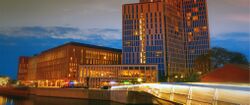
Sjealand wields considerable influence in Nordania and is the Regional Power in western Nordania and in the Tynic Sea Region and is a Great power in international affairs. Sjealand is a founding member of the Nordanian League, with its headquarters being located in Sjealalands capital Asgård. As a result Sjealand wields a sufficient degree of influence on the diplomatic interactments between states. The founding of the Nordanian League was spurred on by the founding of another organisation, which Sjealand co-founded with Swastria, the Tynic Commission, which now governs economic and maritime affairs in the Tynic Sea. In 2015, Sjealand was described as being "the best networked state in the world", because it is a country that "is member of more multi-lateral organisations than any other country" by Aininian political scientist Clothilde Paulet.
Sjealand is a member of the Esquarian Community, the Nordanian Space Agency, the Tengkong System, The Organisation for Common Peacekeeping (OMPC), the Organisation of Voragic Ocean States and the West Nordanian Maritime Council. It is an associate member of the Borean Community, the Conitian Community and the Royal Pact. It is the leading member of the International Tynic Organisation (ITG), a collection of Tynic speaking states, minorities and groups from across Esquarium.
As a historically diplomatic-focuses state, Sjealand is a significant hub for international relations and host the largest assembly of diplomatic missions in Nordania and hosts the headquarters of the Nordanian League and the Tynic Commission.
Sjealands foreign policy has largely been shaped by a policy of Sjealand First, with the government actively seeking to better the country's international standing and own security. However after the War of the Njord the foreign policy has also been shaped by a desire to hold back Ambrose, in fear of a potential repeat of the conflict, with measures taken to secure Sjealand and its borders from Ambrosian aggression. Before the 1990´s Sjealand also sought to exclude Swastria from Northern Nordanian politics, primarily out of the ethnic troubles in the Swastrian region of Hvidland, a majority Tynic speaking region, in which violent seperatists were supported by the Sjealandic government. However after a cease-fire agreement in 1988 saw a strengthening of links between the countries, especially militarily, even as the Sjealandic government still seeks an arms-length relationship to Swastria.

Sjealand is a member of the Northern Sea Defense Organization, a military alliance composed of Sjealand and Jorland and Lothican. The goal of the alliance is to keep the common peace and security in the Sea of Njord and to promote common defence between the member countries. Through the alliance Sjealand is heavily involved in international aid and peacekeeping.
Sjealand retains very strong bilateral ties to the countries with which it traded between 1100-1900, maitaining strong political ties to Tuthina and the Union of Nautasian Islamic Republics especially thanks to their common economic and military cooperation in the past. Sjealand and Tuthina still maintain an official military alliance through the Tengkong System. Thanks to this Sjealand also enjoys favourable relations with Senria, which were strengthened thanks to official senrian support in the War of the Njord. In addition Sjealand has historically also enjoyed favourable relationships with the Aininian Republic, as the rivalry between the Kings of Ainin and Sjealand led to Sjealand actively supporting the rebels in the Aininian Revolution, and the two countries have not had any conflicts since then.
Military
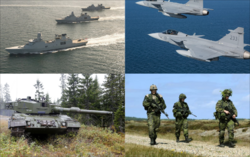
The Royal Sjealandic Defence (Kongelige Sjællandske Forsvar), are the military and paramilitary forces of Sjealand, with HRM The Archking, as supreme commander. The Defence consists of the Royal Sjealandic Army (Den Kongelige Rigshird), Royal Sjealandic Navy (Den Kongelige Marine, normally referred to as Flåden), the Royal Sjealandic Air Force (Kongelige Sjællandske Flyvevåben) and the Royal Sjealandic Border Guard (Kongelige Grænsegarde), which serves as a mixed border police, paramilitary and military police unit partly responsible for the security of Asgård. In addition the army, navy and air force each operate their own divisions of the Sjealandic Home Guard a militia consisting of part time volunteers. Together the Sjealandic Defence is among the largest and best equipped in Nordania.
The Border Guard operates integrally as a part of the Sjealandic Defence, as their members are drawn from specific units of the army, and thus falls under the purview Ministry of Defence, but because of their operations as border guards and military police their are operationally attached to the Ministry of Justice with the Minister of Justice as commander. In addition to their common duties the Border Guard also operates the counter-terrorist unit of the Defence, the 11th Company (Elvte Kompagni), which was founded in 1974 to combat increasing numbers of Swastrian Tynic false flag terror attacks and Swastrian terror attacks during the Hvidland Troubles.
Sjealandic intelligence units are divided between the Sjealandic Security and Intelligence Service (Statens Efterretningstjeneste), a division of the Sjealandic Police (Rigspolitiet), which is concerned with domestic security, and the Sjealandic Defence Intelligence Service (Rigets Efterretningstjeneste), which is a component of the Sjealandic Defence, operating as its own division under the Ministry of Defence, with the Director for Foreign Intelligence Affairs holding a rank equivalent to Lieutenant-Colonel.
The Sjealandic Defence lastly operates a special military corps, the Sjealandic Foreign Legion (Fremmedhirden), which was founded after the Ambrosian War of Liberation so to integrate Ambrosian loyalists into the Sjealandic Defence. Today nationals from every inhabited Esquarian continent serve in the Foreign Legion, with Legionnaires from Nordania and Borea making up around 67% of the membership alone. Serving in the Legion is considered among one of the most prestigious services a soldier in Esquarium can do, and the Legion instills a strict sense of loyalty to itself into its members. Today around 7,500 Foreign nationals serve in the Legion, which is closed to Sjealandic-born citizens. Sjealand's annual military expenditure in 2011 was US$40.4 billion, or 2.31, of its GDP.
Sjealand has major military industries with one of the largest naval industries in the world. Its major military companies include Asgård Riffelsyndikat (Small arms), Haastrup Flyindustri (Aerospace) and the Asgård Dockyards. It actively exports military equipment to many foreign countries, and have cooperated with other Nordanian nations for military projects, specifically the Tynir SKW 1.
The largest Sjealandic military parade is the Liberation Day Parade, a parade celebrated annually since 1972 on the 12th of November, the anniversary of the end of military activity in the War of the Njord and a major celebrated event in Sjealandic military history. The original victory was celebrated with one of the largest military parades in Nordanian history, and the current parade remains among the larger Esquarian annual military parades.
Economy
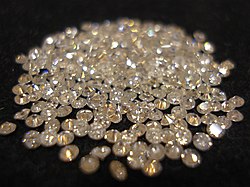
Sjealand has a developed mixed economy, and has been classed as a high-income country by several international organisations. It ranks in the top of the world in terms of gdp per capita, both in terms of PPP and nominal gdp. This is attributed to its well developed economic system and strong financial sector. The Sjealandic economy is one of the most free economies in Esquarium and the most free in the Tynic Sea Region. It has been classified as a highly competitive economy, with the national currency the Rigsdaler being highly traded.
It has one the highest ratios of tertiary degree holders in Esquarium, thanks to its open education system, in which education is paid for by the government, and students are recommended to pursue a career of their own choice. Sjealand ranks the highest in the world for worker's rights, with almost all employed Sjealanders being members of a union, and the government largely leaving the workers and employers to negotiate. Many have criticized the Sjealandic government for its focus on domestic workers rights compared to its notoriously lax attitudes to workers rights outside of Sjealand, with several Sjealandic companies being found guilty for severe workers rights violations in Nautasia as well as the purchase of blood diamonds from Akai. While lacking an official legislation on minmum wage, Sjealand still has the highest minimum wage in Esquarium, with the high wage floor an example of the large power trade unions possess in Sjealand. Thanks to the large amount of cooperation between varying unions workers of similar working-class jobs in Sjealand earn more than double of what some in other similar countries earn. In 2016 union density was 74% The Sjealandic currency, the Rigsdaler (₹), is the strongest and most traded currency in Nordania, with several currencies, including the Auregan Bres, the Hethlandic Þaler and the Vestmannan Stucce pegged to it. Established in the 900's the Rigsdaler is the oldest functioning currency in all of Esquarium, however it, like many other currencies, has gone through a long series of changes.
Historically a strongly mercantilist country, Sjealand began liberalising import tariffs in the early 1800's as a response to declining trade with Borea, and further liberalisation of the economy along with several wars, most notably the Great War of the North led to the end of mercantilism as a dominant policy in Sjealandic economics, and the creation of a Sjealandic liberal tradition in international trade. After the end of mercantilism Sjealand has historically not intervened much in its exports and imports, even when other countries like Nameria or Swastria raised protection for various sectors. The policy of free trade has greatly strengthened Sjealandic exports, especially of butter and meat, which Sjealand produces in high quality. Important sectors for Sjealandic exports include jewelry, agricultural products and packaged medication.
Companies
Sjealand is the birthplace of several world-wide companies and conglomorates. Historically the continental center of trade and commerce, Sjealanders formed some of the first joint-stock companies in Esquarium, partly to fund trade expeditions to Tuthina and beyond. During the middle and latter part of the 1800's as Sjealand industrialised these old mercantile companies were slowly replaced by modern companies, even as some companies remained in their old forms, now as shipping companies and business conglomorates.
Some of the largest Sjealandic companies include: Asgård Riffelsyndikat (Small arms); Kronens Finansfond (Conglomerate owned by the royal family); Sjællandsk Filmindustri (Media Conglomorate); Nordania Shipping (The largest Shipping Company in Esquarium) and the Ramsland Group (Nordanians largest brewery). The Royal Conglomorates (Kronens Finansfond) is a conglomorate owned by the Royal Family which manages several smaller companies, real estate and economic ventures across Esquarium, providing the money that the Royal Family live on.
Agriculture and fishing
Sjealand has a favourable location in the seas, touching as it does the Tynic Sea, the Voragic Ocean and the Sea of Njord. As a result Sjealand has throughout its history relied heavily on fishing. While not a large part of the general Sjealandic economy, fishing still remains very important to Sjealandic coastal communities, especially the northern islands like the Tårnøerne, where fishing is a central part of the economy thanks to bountiful fish flocks in the Sea of Njord. However today Sjealand is plagued by problems related to overfishing, and fish stocks in the waters around Sjealand have seen a rapid decline since the seventies, leading to several government mandated halts in fishing, and new quotas on fishing to help save the fishing industry. In addition to the regular fishing, Sjealand also practices whaling as northern communities in Sjealand rely on the whales for food and as a part of the culture. Laws from Asgård however require as humane a killing as possible, but this has not stopped certain animal rights groups, in particular from Ainin and Luziyca to protest the continued whaling.
Historically Sjealand has been a large producer of agricultural products. Much of the population used to be engaged in agriculture, and certain areas such as the Frederiksodde Peninsula and eastern Sjealand have extremely fertile soil, allowing for a strong presence of agriculture. As such historically Sjealand was dominated by these fertile areas. Extensive tracts of fertile land, the application of modern technology, and national subsidies have combined to make Sjealand a leading agricultural producer and exporter in the Tynic Sea region. Wheat, poultry, dairy, beef, and pork, as well as internationally recognised processed foods are the primary Sjealandic agricultural exports.
Tourism
Sjealand is ranked as the number one tourist destination in Nordania and the overall third most visited country in Esquarium after Ainin and Tuthina with 69 million foreign tourists annually. This figure excludes people spending less then 24 hours in Sjealand, such as short international layovers as well as ships refuelling in Sjealandic ports. It is number one in Esquarium for income from tourism, related to its long coastline and many attractions, along with a tendency for tourists to have longer durations. The most popular tourist sites outside of Asgård in Sjealand include the Vestfjeld Ski-resort (3.8 million), Yngsvilla (2.8 million), Nordvakt (2 million) and the Götensdal (1.5 million).
Many Sjealandic secular and religious events attract millions of visitors from across Esquarium, most famously the Ægirsgilde a week-long religious festival in the streets an port of Asgård celebrating the city and its patron spirits, in addition to these are the famous Sjealandic balls and Frisjælsfest events when the characteristic fast paced Sjealandic dances are enjoyed by tourists both domestic and international. Music in particular now grips the tourists especially thanks to a series of large music festivals from across the country, such as Sommer i Asgård and Nillas Dansefestival
Sjealand is in particular noted for its many sights and cities of high cultural interest, a remnant from the Sjealandic Trade Empire, and many tourists specifically go to Sjealand to experience the magnificence and grandeur of the sights and to get their own experience of it. A few small towns in Sjealand almost exclusively now cater to tourists and have transformed into recreations of historical Sjealandic towns and villages, this also being used to film various historical movies in. With looks and aesthetics such a prominent draw for tourists, the Sjealandic Government, and many local governments actively promote picturesque small and large sites alike with associations celebrating the most beautiful villages in the country, the prettiest forests and the best local restaurents. Sjealand also attracts a large number of religious pilgrims, primarily those from Rikr Atrunaðr.
After Asgård, the most visited area in Sjealand is the Adelsdalen river valley, going from Grønnedal to Asgård. The area is famous for its beautiful villages, palaces and vast gardens and hunting forests as well as a large amount of historical events including jousting, fencing and Saddelløbet a horse-race going through the valley. The wider Frederiksodde peninsula region in particular also enjoys many of these tourists with a large amount of golf courses, ski resorts and restaurents. Each year the Frederiksodde hosts 50% of the world's superyacht fleet.
Energy
Sjealand has considerably large deposits of oil and natural gas in the Sea of Njord thanks to its many outlying islands giving it a large part of the sea-floor. Exploitation of these major oil and gas-fields have in large part strengthened the economy, with Sjealand producing 759,980 barrels of crude oil a day in 2010. However in recent years many oil-fields have been depleted and the government has taken steps to begin the closure of the nationalized oil-industries once the fields are sufficiently empty. The replacement of these will be wind power a sector in which Sjealand is a long time leader with wind turbines providing around 51.4% of the national electricity consumption. Large turbine fields in the Sea of Nord and the Tynic Sea have been constructed in the last years with the total goal being that wind energy will supply 80% of Sjealand by 2030.
Statens Strømudvikling (STU) is the main electricity generation and distribution company in Sjealand, and the owner of most of the Sjealandic oilfields. STU has in recent years gone through many efforts to have integrated energy sources such as wind power into the national grid. Now focusing on intelligent battery systems (V2G) and plug-in vehicles in the transport sector. Such as in 2012 when Asgård was chosen for an experiment with electric cars and 16 stations were given charging stations. In addition to its other energy-sources Sjealand also makes large use of hydroelectric dams to produce electricity.
Transport
The Sjealandic railway network strecthed as of 2012 17,165 kilometres, connecting all of the major Sjealandic centers of population along with the more rural parts of the country. Currently in the process of electrifying several tracks and lines the SSB (Sjællandske Statsbaner) currently also runs a series of train-buses for replacement. The lines between Asgård and several other cities have had high-speed trains introduced running at 320 km/h, along with high-speed lines going to Swastria. Swastria, being Sjealands only neighbour by land, also serves as the only rail connection Sjealand maintains by land, however the Belt-Tunnel under the Gyldensund in the Great Belt also connects it by rail and road to Hethland. In addition to normal rail connections Asgård and Götensholm also maintain underground metros, and both cities along with others also have tramways and light rail, complimented by buses.
Significant investment has been made in expanding the road and rail links between the Realms in Sjealand, with the individual realms and the national government each funding various infrastructure projects, most notable the Belt Tunnel but also several large bridges in the Liniavik bay connecting Sjealands many large islands to eachother and the mainland. It is now possible to drive from Liniavik to Bondø and Bakkafjörður without having to take a ferry, a testament to the tenacity of bridge-constructing in Sjealand. The road networks connecting these bridges and islands, aswell as binding the country together are subdivided into Highways, Main Roads, Country Roads and small roads. The national government is responsible for the construction of Highways and main roads, with the realms and amter taking the responsibility for the remainder.
Private vehicle ownership is increasingly common in Sjealand, with most adult homes owning one or more cars, however a high registration tax (150%), VAT (25%), and one of the world's highest income tax rates limit the extent of more expensive and modern cars in Sjealand. This leads to generally older and less fuel efficient cars being the norm in Sjealand, something the government as attempted to counter-act by encouraging ownership of electric and hybrid cars through discounts and tax breaks, however the policy has not seen that large succes, on the other hand it has greatly encouraged a large development in Sjealands already large bicycle culture. In Sjealand cycling is a very common form of transport, particularly for the young and for city dwellers with around 70,0000 km of paved bicycle routes.
There are 305 airports and heliports in Sjealand, however most of these are small regional airports, and only 9 international airports exist in Sjealand, with the largest being Asgård Airport also known as Asgård Ønnerød. It is the largest airport in the Tynic Sea region and handles over 37 million passangers a year. Laugarás Airport is the only international airport in Sjealand not located in the mainland.
Science and technology
Demographics
Population
In September 2016 the population of Sjealand was estimated by Statistics Sjealand to be 32,657,434, giving it the second highest population in the Tynic sea region after Eibenland. The median age was 39.7 years, falling from 42.1 in 2010, and there were 0.92 males per female. Sjealand has a positive birthrate with 2.13 children born per woman, thanks to a heavy campaign by the government in the early 2000's to increase fertility rates and prevent a population collapse. Sjealand is frequently ranked by international groups as the country in Esquarium with the happiest population, this has been attributed to the active government and the country's highly regarded education and health care systems, and its low level of income inequality.
Historically the Sjealandic population travelled much of the world on merchant vessels and in the sizable sjealandic navy leading to quite a sizable diaspora of people from Sjealandic ethnic groups across Esquarium, as well as far-reaching traces of Sjealandic presence.
Ethnic groups
Population by ethnicity
Most Sjealanders (around 89%) belong to the same Nordane ethnolinguistic group, the Haemaslandic Peoples, which primarily resides in Sjealand, but also has minorities in Jorland and Lothican, Vasturia, Vestmannaland, Swastria, Ambrose and Eibenland. Of this group around 5 distinct ethnic groups are recognized by the Sjealandic Institue of Languages: The Tynics, the largest and dominant ethnic group; The Brattans, the second largest ethnic group primarily living in the southern and eastern parts of the country; The Fjeldras, the who reside in the north and the Laugaráns and Øicers who together reside in the Tårnøerne islands, as well as norther Sjealandic islands and in neighbouring countries. The Tynic, Brattan and Fjeldran languages are, due to their close proximity, closely intertwined and highly mutually intelligeble with eachother. Some linguists have proposed that they are in fact all dialects of the same language, however this has been denied by the Sjealandic Institue of Languages, which supports differing cultural and ethnic practices to encourage diversity within the native peoples.
While encouraging diversity between the native ethnic groups in Sjealand, the government still presents Sjealand as an ethnically homogeneous nation, thanks to the implied brotherhood and close ties between the ethnic groups. While this is true for the 3 largest ethnic groups, the Laugaráns and Øicers speak languages not really intelligeble with the mainland languages, more closely related to similar languages in Vasturia, and as such enjoy special protected status for their languages and official funding for the preservation.
The two largest non-sjealandic ethnic groups are the Nahuas and Ambrosians, of which only the Ambrosians enjoy special treatment. The large Nahua population of 3,342,788 peoples are a remnant of the former institution of slavery in Sjealand, in which millions of people from Nordania but primarily Nahuas from modern day Karazawa were bought at large thrall auctions in the southern Tynic. Historically subject to mass mistreatment, ritual tattoos and severe crimes against the humanity, and still looked down upon by many Sjealanders, the Nahua society in Sjealand exists on a semi-independent basis from the rest of Sjealandic society, with many Nahuas resenting the Sjealanders, as seen through the rise of criminal organizations such as Teotl, named after a slave guerilla army in the 1600's. Today many Nahuas live in ghettos, forming the poorest row of Sjealandic society, with their culture shunned and without support from the government, which sees it as not welcome, and with the Nahuas disproportionally represented in crime and the justice system.
On the other hand the Ambrosians in Sjealand represent a different history, with most of the 1,586,408 Ambrosians in Sjealand moving there during the Kingdom of the Two Daughters, a period of union between the two countries. Many Ambrosian loyalists fled to Sjealand during and after the Ambrosian War of Liberation, proving some of the most staunch monarchists and conservatives in modern Sjealandic society, and with their language and culture protected by the Sjealandic government as a sign of respect and gratitude. Around 32,000 of the Sjealandic Ambrosians reside in the Tårnøerne archipelago, and are unlike the majority, newer settlers, arriving during periods of Ambrosian control of the islands around 1700-1920. As a result they are quite different from the other Ambrosian community in Sjealand, with them practically being two seperate entities. This was most widely seen during the War of the Njord during which the majority of Tårnøerne Ambrosians welcomed the Ambrosian invasion, while the mainland Ambrosians were outraged and were among some of the fiercest frontline fighters on the Sjealandic side.
Languages
Tynic is the de facto official language of Sjealand, and the de jure official language of the national government. While only natively spoken by a little over half the population, almost all the population can understand Tynic, and communicate easily with a Tynic Speaker. Even the Nahuas in Sjealand speak primarily tynic with some speaking a tynic-Nahuatl Creole language called Tynikatlahtolli, however little to no attempts have been made to standardize the language, and the government has refused to divert funds to support its development and growth. However in some Nahua-majority neighbourhoods, primarily in Asgård, speakers of Tynikatlahtolli have taken the initiative and put up their own streetsigns in Tynikatlahtolli.
Tynic is a mandatory second language in school for Ambrosians, Laugaráns and Øicers, while Brattans and Fjeldras only divert some of their main language classes to guides in Tynic, mainly to easy mutual intelligibility between the languages. The first mandatory second language for most people is French, which children are taught from ages 7 and up and as such around 89% of Sjealanders speak fluent French on a high level of proficiency. Teutonic is also added at age 9 in most schools, however some schools in Northern Sjealand, and particularly in the Tårnøerne, Teutonic is exchanged for Anglish or in a few cases Vasturian. As a result most Sjealanders end up trilingual and in a few cases pentalingual once they finish official education and move on to Gymnasium.
Peerage of Sjealand
The Peerage of Sjealand (Sjællands Adel) refers to the legal system in which certain individuals and families are elevated above the common population and blessed with certain rights and privilieges. Composed of several landed, unlanded, hereditary and non-hereditary noble ranks the Peerage of Sjealand governs the nobility. The peerage forms a central part of the Sjealandic Honours System and is a highly sought after by the majority of the population. As of 2016 the hereditary Sjealandic nobility consisted of 1268 noble families, of which the latest was elevated in 2013, with a total of 53,750 hereditary nobles. Of these families 114 are landed gentry and actually hold official titles of pieces of land, even though these are primarily ceremonial. Hundreds of other families own manors and country-houses in the country but are distincted in their naming, a landed Jarl would be titled as Erik de Villemoes, Earl of Bøgenlund while an unlanded Jarl would be titled as Erik de Villemoes, Earl in Bøgenlund. Traditionally landed gentry have the Lens- added to their title when non landed gentry is involved such as Lensbaron opposite Baron, this means Baron of the Realm as opposed to simply a Baron.
The landed nobility consist of the higher echelons of the Peerage, and are almost exclusively of the Ancient Nobility (Uradel), descended from feudal families from before the Gilded Age, as opposed to the Letter Nobility, who recieved their distinctions after the 1600's. The highest official noble rank in the Sjealandic Peerage is the title of Grand Duke, however this title is only ever conferred to immediate members of the royal family, and as such the highest noble title in actuality is the title of Duke (Hertug). All Sjealandic dukes are members of the landed gentry, with the remaining landed titles being divided up between Earls (Jarler), Princes (Fyrster) and Barons (Baroner), traditionally a landed Baron would rank higher than an unlanded Baron, but not higher than an unlanded Prince.
The peerage still plays an important role in Sjealandic society, as life-peerages are often granted to individuals and individuals families on basis of meritocracy. In addition to this, many schools, national competitions and others are often allowed to grant knighthoods to people for exceptional actions, having the highest average score or for winning. Most famous of these are the annual University Fencing Competitions, in which the winner is inducted into the Knightly Order of the Eleph. Knightly Orders are still very much an active part of Sjealandic society, with the distinction drawn between Orders made up of Knighted individuals and members of Royal Knightly Orders. These orders have in great deal taken the place of fraternal orders seen abroad.
Health
Education
Social Welfare
Religion
Largest cities
Largest cities or towns in Sjealand
Statistics Sjealand | |||||||||
|---|---|---|---|---|---|---|---|---|---|
| Rank | Realm | Pop. | Rank | Realm | Pop. | ||||
 Asgård  Götensholm |
1 | Asgård | Asgård | 2,456,765.00 | 11 | Skargas | Vanaheim | 247,731 |  Holmegård  Miklagård |
| 2 | Götensholm | Midgård | 1,591,348 | 12 | Austevoll | Jotunheim | 203,771 | ||
| 3 | Holmegård | Vanaheim | 940,185 | 13 | Grønnedal | Asgård | 200,400 | ||
| 4 | Miklagård | Alfheim | 707,120 | 14 | Äggarna | Midgård | 178,210 | ||
| 5 | Nordvakt | Alfheim | 581,822 | 15 | Varhaugr | Helheim | 169,972 | ||
| 6 | Frederikssted | Asgård | 510,741 | 16 | Yngsvilla | Niflheim | 140,454 | ||
| 7 | Nedansjö | Muspelheim | 334,112 | 17 | Tørnes | Jotunheim | 134,672 | ||
| 8 | Lindesnes | Vanaheim | 301,706 | 18 | Birka | Svartalfheim | 123,241 | ||
| 9 | Malmbäck | Svartalfheim | 273,077 | 19 | Nillas | Muspelheim | 119,068 | ||
| 10 | Bondø | Alfheim | 272,230 | 20 | Lusing | Svartalfheim | 85,920 | ||
Functional urban areas
Culture
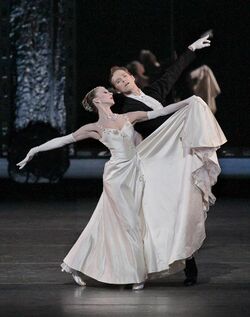
Sjealand is somewhat of a cultural island in Nordania, while there are cultural and historic ties with its Tynic Sea and Sea of Njord neighbours, it has developed a uniquely Sjealandic flair as a result of its wide-spread trading and cross-cultural pollination. It has however historically been one of the most socially progressive cultures in the world, with Sjealand having had gender-equal institutions for centuries, most famously its army, which at times was majority female, along with the Sjealandic view that same sex partnerships were natural and to be celebrated, as part as the general Sjealandic fascination for love and passion. Passion and love along with pageantry, intrigue and beauty and important and celebrated parts of Sjealandic culture.
Sjealand has been a centre of Nordano-Conitian cultural development for centuries. May Sjealandic artists, musicians, architects and dancers were among the most renowned of their time, and Sjealand is still recognised in the world for its rich cultural tradition, especially in High Culutre. The Sjealandic elite has traditionally been the patrons of much artistic creation, with the government and monarchs always promoting artistic creation, with the Ministry of Culture being one of the founding ministries in Sjealandic democracy. Said ministry has also been instrumental in many cultural activities, granting subsidies to artists, promoting Sjealandic culture in the world, supporting festivals and cultural events, protecting historical monuments. The government has in general put a large amount of focus on the protection and spread of audiovisual culture in Sjealand.
However Sjealandic culture has historically, and in the modern day, been criticised for its heavily elitist roots, many of which can still be seen today, especially in Sjealandic music, art and fashion, where a lot of focus is put into what the higher society deems fashionable. Thus Sjealand has often historically been subject to prejudice from many of its neighbouring nations, with many, especially in nations like Ambrose and Aurega viewing Sjealanders as arrogant snobs because of the difference in culture.
Art
The origins of post-medieval. Sjealandic art can primarily be traced from initial influences by the Conitian school of art. Historically before the 1300's art in Sjealand was highly localized, with most art appearing in jewelry, carvings and books. Notably a lot of medieval and late medieval Sjealandic paintings had quite an abstract quality, with the style mandatin . It wasnt until Asgård' rise as a trading power, and the introductin of foreign gem-cutters that the art was institutionalized, and Sjealand began developing its own distinct styles. In the early 1400's several delegations were sent to Conitia, especially to Desena and Montecara to study the local styles and schools, with the painting school in Grønnedal specifically borrowing many inspirations from Montecaran painters. Specifically artists like Zaccheria Fiorensi and Giovannozz Albicio enjoyed great popularity among the Sjealandic art emigré community.

By the 17th century Sjealand enjoyed an explosion in painting as Sjealandic artists stopped travelling abroad to learn, and instead Sjealandic art became prominent, with foreign artists going to Sjealand. The Sjealandic Academy of Fine Arts was founded with the Mespalian Viliari Nînecosqui as its first grand-master. Excelling in Coniaism, painting fanciful ideas of ancient conitian cities and happenings, or Sjealandic history in Conitian style garb. The styles and posing of this painting style did live on after the founding of the academy. Along with general Sjealandic trends the painters of this era moved towards local subjects in local dress, especially the rise of the extravagant spending by the nobility.
The golden age in Sjealand, which lasted for the majority of 1700 saw the Sjealandic artists developing the rococo style of art, with courtly and noble artists such as Henrik de Valdergren, Niels-Erik Burlev and Rasmus Yngvild-Ditlevsen being among the trendsetters. Painting in this era saw a lot of foucs on portraits and paintings of idyllic countrysides and manors, primarily focusing on the nobility's life painted in utopian scenes. Statues were also highly created by the art academies of Sjealand, with many statues made for religious and courtley ceremonies, but also smaller porcelain figurines depicting various scenes of revelry. The rococo style of art remained highly used in Sjealand, supported by the highly influential Academy of Fine Arts. However with time the style lost its ground against the newer styles of romanticism and realism who would evolve into naturalism.
In the later parts of the golden age and after it, in the 19th century, Sjealand's influence over painting became even stronger, with the development of new new styles of painting such as Impressionism and Symbolism, even though realism remained the preferred style by the court. However these newer styles did find a lot of influence with the wealthy bourgoisie of Sjealand, earning them newer patrons to replace the old nobility. These new styles can still be seen in many homes of upper class Sjealanders.
Sjealand has the largest amount of museums entirely or partly devoted to sculptures and painting works per capita in Esquarium. The majority of old masterpieces created before or during the 18th century are owned in private collections by the court of nobility of the country, with the majority being displayed at various state-owned museums, most notably NO in Asgård. These paintings include Sjealandic masterpieces and foreign as well, many bought during the age of trade. Sjealand is also home to one of the most diverse artists in the world, with hundreds of artists from across the world flocking to Sjealand throughout history from nations such as Ankoren, Tinza and Tuthina. The Tuthinan court did in fact commission portraits from the Sjealandic Academy several times.
Architecture
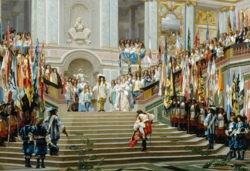

With its expansive forests, Sjealand has long used wood in its architecture, many local Godrshals and homes remain built in wood, reflecting the strong appeal that this material continues to hold for Sjealandic designers and builders. The most famous use of wood in Sjealandic architecture would be the træsnit style, which evolved in Asgård as a result of legal loopholes, where constructers only built the first floor in stone, constructing several others on top in wood.
Historically during the early middle ages the nobility generally did not construct fortified castles as the Sjealandic geography lent a lot of itself to defence, with only those in Østerled and Hvidland building proper castles. After the Swastrian Invasion of Sjealand however the government began a massive project of constructing border fortresses to defend against potential swastrian incursions, spearheaded by the Marcher lords of the Sjealandic borderlands. Most notably a series of 35 fortresses were constructed in the mountain-passes between Sjealand and Swastria by drafted workers and fewer but larger fortresses in the flatter border regions near the Svasterelven river, most famously the Ullerslev Citadel.
By the 1400's the Vasturian style of architecture became common in Sjealand, brought to the country by Vasturian architects and emmisaries in the 1300's the style was popularized by the monarchy and came into fashion after the construction of the Asgård Palace commenced, with many nobles copying the court and constructing their own manor homes in the Vasturian style. This also marked the true split as most of the nobility ceased living in castles, as the professional, full-time Sjealandic army and large amounts of border fortresses protected them from outside threats, and because of a general internal peace maintained by the monarch. A notable of these palaces is the Ducal Palace in Nillas.
The cessation of the need for castles in Sjealand was the actual catalyst for the mass construction of the many châteaux in Sjealand, especialy in the Adelslandet region, where hundreds of palaces and manors were constructed in newer architectural styles, with focus being put on luxury, looks and the pleasure of the patron. Many buildings in this period were constructed in meticulous detail, making the area famous for its many beautiful palaces.
The begining of the Sjealandic golden age saw the development of the rococo style to take over from the aging baroque in Sjealand, contemporary with the movement in art. Rococo was truly Sjealandic at heart with a focus on pomp and prestige not seen in Sjealand beforehand. The focus on this fit with the ideals of the nobility at the time, supporting the architectural principles of illusion and theatricality, an effect achieved by dense ornament, asymmetry, fluid curves, and the use of white and pastel colours combined with gilding, drawing the eye in all directions. The fashion in Sjealand called for magnificence, something highly achieved by the domestic and foreign architects working in the country, constructing some of the most famous rococo buildings in all of Esquarium. The largest and most notable rococo building in Sjealand is the Grand Temple. Constructed from 1724-1732 the building is Nordanias largest religious building. Contemporary with this, Sjealand also saw the widespread construction of fortresses, mainly designed by Jorvish architects, brought in by the Archking.
The rococo style slowly died out with the Sjealandic golden age in the late 1700's, being replaced primarily by the Conitian Neolatin style of architecture, which remained popular for about forty years before the National Romantic style, a Sjealandic offshoot from the Aininian Art Nouveau style, which saw great popularity, and still retains a lot of popularity as the preferred Sjealandic architecture, along with a revival of rococo among some upper class people.
In newer years more modern styles of buildings such as the post-modern has won popularity in Sjealand, primarily out of enviromental concerns, and a desire from many to create buildings better suited for the coming years.
Literature
The earliest Sjealandic written works are found in many older godrshal and runestones scattered around the country. Many of these are the tomb-stones of the people who are said to have undertaken the migration of the Old Haemaslanders into Sjealand, with the oldest of these in the Sydfjeldene testamenting the rise of Berkana, Kauna, Ansur and Vunjø to divinity. After this period most actual written works have been lost, and the earliest literature dates from the Middle Ages, the 1126 text Land ok logh (Land and Law) by Hjalmar Syv, chronicles several stories relating to Ríkr Átrunaðr as well as the history of the unified Sjealand.
Much litterature in Medieval Sjealand, was generally based in national myths and the conflicts of Sjealand against the Teutonics in modern day part of Swastria and Eibenland, who often played the part of barbarian savages who invaded, raped and pillaged in the stories. This type of litterature heavily changed with the outbreak of the Halmsfeld Heresy and the descent of Sjealand into heresy. Many of the fighting nobles would use their chroniclers to write damning texts and propaganda stories about the other sides. These would be read out aloud on market squares to rally the peasantry to fight.
During the 17th century many women, specifically Countess Ildhina de Vårskov, who led a movement writing about borean wonders, writing many fables about the far off lands, based on the stories of merchants returning aswell as visiting Boreans. Many Sjealandic fables were also codified in this period, in particularly stories of elves, trolls, nisser and other magic creatures, who were often used together with morality plays to teach children and young adults important traits such as wisdom and common sense.
Litterature in the 18th century saw, along with other forms of expression, an outbreak in number of works put out and in the quality. At this point in time the ideal nobleman and woman were to be literate, well versed in poetry and litterature and in particuar able to discuss the works. Many of the Sjealandic elite published plays, books and poems anonymously or under pseudonyms, as part of the grand game was the secrecy surrounding identities and the purity of written art without a recognizable author. Many of these works took place at court, describing the political power-plays between nobility as part of the grand game, with mystery, intrigue and passion being common denominators for many of the works. Among the middle class and the peasantry many fables, common stories and sayings were also codified by authors such as Wilhem Nielsen and Gustaf Valdring, who traversed the wide-spread nation collecting local stories and writing them down. This period also saw the rise of the adventure novel in Sjealand, normally involving Sjealanders traversing the world, with often wildly innacurate and mocking descriptions of foreign nations, especially northern Nordania.
The general downturn that Sjealandic society faced in the 1800´s was echoed in their litterature, where writings became much more domestic, focusing on the idea of Sjealand, and the people of it, rather than actions outside the country. The introduction of democracy also had a great influence on the litterature, practically killing the formerly popular courtly intrigue dramas and focusing more on the common man and his challenges. This shift also saw the rise of the Encyclopedoa in Sjealand, as the historien Anne-Mette Ditlevsdottir saw to encompass all the knowledge of her century (in fields such as arts, sciences, languages, philosophy) and to present them to the people, in order to fight ignorance and obscurantism.
Some of Sjealands most renowned authors operated in the 19th century, writing well-researched historical novels such as The Knights of Despenser, The Gold of Estanban and Valdemar the Great. These novels are considered the birth of the Romantic movement with Mine Tanker and Cirkel af smerte being considered "poetic masterpieces". Many of these writings have been adapted into various other forms of media, and novels such as De Undertrykte are considered among the greatest novels ever written.
The Sjealandic Ministry of Culture has, along with other forms of expression, heavily supported the litterature with several literary prizes being awarded in fields such as Poetry, Experimental Litterature and Novels, most well known of these is the Bjørnen, which is awarded bi-annually to Sjealandic litterature that the Commitee views as having done something especially influential on the literary scene in Sjealand. Along with the official prizes, many groups of authors and poets have themselves gone together to form various awards given independently to domestic and foreign authors.
Philosophy
Before the 1500's Sjealandic philosphy was dominated by spiritualism in an attempt to understand Stórrheðrinn and its will. Philosophers in this period argued that Stórrheðrinn was not as much a being as it was the being, arguing that human companionship came from them all being the children of Stórrheðrinn, connecting to rise of the four gods to divinity as Stórrheðrinn recognizing that a new people was born, giving them their own guardians. This spiritualist attempt to understand the world cooperated to a degree with similiar Trinitarian philosophers abroad and attempted to understand the very being of god.
This school of thought generally gave way after the 1500's as humanism grew in popularity and the search for what made god was instead re-routed to what made you human, how much a being could remove from itslef before it ceased to be itself. Some philosophers argued in a cartesianism nature, proposing that the body and mind were completely different, with an immaterial mind and a mechanical body, and generally followed the ideas put fourth by rationalism and cartesianism philosphy, specifically the idea of cogito ergo sum which the general philosophical school of Sjealand heavily supported.
By the 17-1800's Sjealandic schools of philosphy generally split in two, a political and an existensialist school. Political philosophers championed the idea of separation of powers, and these generally led to more nationalist schools of philosophy. Of these Non-aggressive nationalism was championed by many philosophers and religious figures as a way to expand on the philosopher Hans-Erik Godr's ideas of the individual being having the responsibility for its own haspinesp and for its own meaning. These were generally expanded on the state as the state having its own responsibility to keep its own prosperity and strength and thus it should self-improve to attain this.
In the 20th and 21st centuries the dominant schools of philosophy in Sjealand have been spiritualism, existensialism, phenomenology and lately post-modernism, which was in part created by the Sjealandic philosophers Janus Ullerslev and Ingrid Rildra.
Music
The history of Sjealandic music is long and varied. Originally Sjealandic music was highly localized, not really connected to any wider movements within music and instead mirroring the native tendencies in music, particularly through the use of homegrown instruments like the nyckelharpa. The music of Sjealand remained primarily in folk tunes such as Herr Mannelig with a focus on drums, repetition and primarily storytelling through song. This trend is still seen in modern folk music for Sjealandic traditional dance, such as sladre te mi mor, which puts much focus on fast paced movements. One noticeable older musical tradition was that of skalds, a profession of musical poets who would travel the land performing Kvad or songs performed without musical components. This changed slowly with the introduction of Eibenlander minstrel Gerke Von Zymmern, who along with a troupe of musicians started the Royal University of Music and Performing Arts in Asgård.
Sjealandic music experienced a golden age during the Baroque and early classical classical periods in the 17th-18th century. This was thanks to the rich courtley life and the styles of the age demanding dignified seriousness and impressive grandeur, which the monarchy sought to gain through music such as the Fanfare of the Sjealandic Court by Jorvish born composer Gijsbert van der Westhuisen. Other famous baroque composers in Sjealand include Biarni Ivarsen, Manni de Holavang, Joárr Tvilla, Helghi Rødkild and Gunnleifr Vidarsen. The prevalence of balls and masquerades in this period greatly encouraged the creation of music for the court in this period, spurred on by a successive serious of monarchs who saw themselves a the patrons of music.
While poorer societies in northerh Nordania such as Ambrose, Wosrac and Aurega heavily shunned the Sjealandic baroque for its supposed femininity and focus on grandeur, the courts of the Tynic Sea region heavily favoured the musical schools and composition such as Asgårrd Concerto No. 3 in G major were played by monarchs and nobles across the region, with composers being some of the best paid artists of the time. This is most famously seen in the Swastrian Royal Anthem Heil dir im siegerkrantz whose original lyrics were written for Frederik II
The complexity and stateur of the Baroque music eventually began falling out of favour, with the court beginning to prefer the lighter and clearer texture of classical music mainly because of the development of the style gallant and newer composer gradually took over from the baroque composers of the early 1700's, among these composers such as Manlio Bianchi (Ode to the failing love) and Cheney Arnoux (String Quintet in C Major) moved from their home-countries to Sjealand and developed some of their most famous music there, either as gift or commissions by the court. This was one of the catalysts of a revival in the Sjealandic Opera Scene with operas such as Huimonts Night being created and shown in Asgård.
During the Romantic music era Sjealandic music gained new energy, as nationalist anger against the southern Teutonics and many composers favoured a surrender to nature, a fascination with the past and the supernatural, the exploration of unusual, strange and surprising sounds, and a focus on national identity. Specifically that which set the difference between Sjealanders and Swastrians, which many Sjealanders viewed as a purer Sjealandic High Culture. Out of this came amongst others the heavily bombastic re-imagining of the Royal Anthem, which is the currently used version. The opera, revitalized by Huimonts Night, experienced a golden age in Sjealand as writers prolifically wrote new operas. Late classical music in Sjealand saw a focus on longer more detailed pieces, such as Lise Nielsens Champagne Galop and Tor Madsens The Inextinguishable as well as dance music, specifically for the Sjealandic walts such as Kunstnerlivet and Tynervalsen. However in opposition to this more standard music came a group of students who left the Royal University, founding modern Esquarian cabaret and can-can.
Sjealandic music then followed the rapid emergence of pop and rock music at the middle of the 20th century. French would become one of the main languages of Sjealandic rock music, along with Tynic. One of the most famous rockbands of the sixties MineDrenge originated from Sjealand, and today it is home to rock musicians such as Les trois troubadours and Fils de Putain. Unlike other Nordanian nations, Sjealand never experienced a growth in heavy and death metal, instead seeing pop rock and punk rock flourishing along with the regular scene. Jazz music was introduced from Ambrose in the thirties and is today very popular in Sjealand, with Asgård hosting its own jazz-festival.
Dance
Dance is one of the most important and easily recognizable facets of Sjealandic culture. During the beginnings of Old Haemaslandic civilization in Sjealand dancing was seen as a way of getting in touch with the divine, through ingestion of hallucenogenic plants and the fast paced erratic movements one would move closer to the incomprehensible divine. This dancing is still seen in modern Ríkr Átrunaðr albeit toned down. Dance was also a common factor throughout normal Sjealandic life, marriages and feasts were celebrated with dancing, and the nobility would indulge in heavily complicated dances.
Modern Sjealandic dance can be split into two groupings, folk dance and high dance, with most Sjealanders being able to partake in both. Folk dance is as the name implies generally a descendant of traditional Sjealandic dances, noted for their fast pace and taxing learning curve. Male dancers are often dressed in extravagant clothing with large furry hats, daggers in their belts and simple colour-schemes. Folk dance itself is divided into various local and national dances, such as Vedel a war dance performed by around thirty or forty dancers, the dance involves the essence of scouting a field and the dancers are seen spinning and jumping as if navigating difficult terrain. General trends among the folk dances involve the mens long folded jumps, flurries of kicks, use of wild pirouettes and turns as well as folded out arms. The dances are noted for a high level of choreography compared to other folk dances, with many viewing it as a competition among individual dancers. Indeed many of the dances involve months of preparation as the inclusion of weapons and other dangerous artifacts often can lead to injuries.
During city and town festivals large spaces tend to be cleared for performances of the folk dances Vedel and Kalhi, men and women face off against each-other first in the Vidar, the men unleashing a flurry of wild movements and jumps while highly choreographed, the women on the other hand primarily use graceful movements, gliding in and out between the men and generally never stopping their movements where-as the men often take small pauses. The kalhi then overtakes the Vedel and couples join to perform a highly ritualized chase, then men on their toes lightly chasing the women. Another quadrille dance used here, known as the Verlin, mixes typical Vedel and Les Lanciers dancing.
High Dance on the other hand are usually more lightly flowing if still just as taxing. These are primarily reserved for special events such as balls and gallas. Here the most used dances of Sjealand include Ridder-dances, Minuet, Waltz and Asgård Waltz. These dances are couple-dances with people often specializing in only two of these. The Asgård Waltz is especially one of the most focused on waltzes in Sjealand, and great focus is put on the clothing and dances during larger balles. A majority of Sjealanders attend dancing schools at some point in their lives and dancing classes are mandatory for students aged 6-18 with many universities also providing mandatory dancing classes. The most widely used dance in Sjealand is Les Lanciers, the national dance of Sjealand, which is a square dance, a variant of the Quadrille, a set dance performed by four couples. The dance is divided into 5 sections who graually increase in difficulty, these being: La Dorset, La Victoria, Les Moulinets, Les Visites and Les Lancers.
Cinema
Sjealand and cinema goes hand in hand, it was one of the early adopters of cinema, going back to 1897, four years after it was invented in Montecara in 1893. Sjealand has also been the home to several important cinematic movements with notably many art films. Sjealand maintains a steady stream of films due largely to funding by the state-supported Sjealandic Film Institute, and it is also home to two of the largest movie production companies in Nordania, Sjællandsk Film and Nordisk Film. It is noted for having a strong film industry, due in part to protections afforded by the Sjealandic government
Sjealandic cinema is among the most profitable in Western Nordania and one of the most exported, even if it is at many times overshadowed by larger film industries such as the Aininian film-industry. Subsequently, Sjealanmd takes steps in protecting and promoting its culture, becoming a leading advocate of the cultural exception.
Fashion
Sjealandic clothing and fashion were until the 1400´s and 1500's in large part a question of the materials available, with most garbs being robust and practical and with most clothing being made of leather and fur. More focus was put on the craftmanship than the elegance. This changed with Sjealands rise as a mercantile power, and Sjealand became arguably the trendsetter in Conito-Nordanian fashion. Quintessential Sjealandic style and dress was, and is, extravagant, elaborate and colourful. Historically the quality of ones garment signified your social standing, and noblemen would spend fortunes on fashionable attire. Sjealanders were famous world-wide for their extravagant style of dress. The more ostentatious the clothing, the more quintessentially Sjealandic, often copied abroad the noble Sjealandic fashion was the epitome of form over function. The association of Sjealand with fashion and style dates from the period of the Sjealandic golden age (17th and 18th centuries) when trade with Borea and Nautasia came under under royal Sjealandic control, giving Sjealand a stranglehold on the sale of silk in Nordania, with the Sjealandic court becoming arguably, the arbiter of taste and style in Nordania and to a degree Conitia. After the fall of the Sjealandic trade empire and the general decline in Sjealandic cultural power Sjealand still retained its dominance of the high fashion industry, establishing many of the great fashion houses of Esquarium.

The city of Lindesnes is the premier perfume capital in Sjealand, with 11 out of the 12 great perfume houses of Sjealand holding their headquarters in the city. Perfume was initially established there in the 1700´s because of trade with Borea and the interest of the royal court only served to expand the perfume industry in Lindenes.
The fashion industry and the Sjealandic jewelry industry still work closely together, and for Sjealandic high fashion the use of gilded threads is not uncommon, Sjealanders value their clothing and the message it sends. Ever since the 17th century fashion has been one of the country's most important industries and cultural exports with modern haute couture being born in Asgård, which today along with Huimont and Montecara is considered one of the world's fashion capitals, and the city is home or headquarters to many of the premier fashion houses. Fashion houses of particular quality are given Royal Assent in Sjealand, with permission to add the Royal prefix to their company name as a symbol of their expertise.
Ready-to-wear fashion has never really struck through in the Sjealandic fashion scene, with most ready-to-wear fashion primarily being foreign as a result of a lack of interest from the major fashion houses, but also a desire to keep their brands high fashion and pure, which has been criticized by many both abroad and domestically as elitist and anti-consumer, with especially the Auregans being vocal opponents of the Sjealandic fashion industry, a sentiment dating back centuries.
Masks of Sjealand
Masks are an intrinsic part of Sjealandic upper-class society, famously and notoriously worn by the bourgoisie and nobility historically as a part of the Grand Game. The Grand Game was an institution in Sjealand referring to the politics and machinations of nobles and merchant princes in a complicated "game" or "dance" of intrigue, seduction, ambition and scandal, an approach to politics, high culture and morality that was quintessentially Sjealandic. The central part of this institution was the constant competing for political power and influence through the use of spies, assassins and the like. As part of this the nobility would do their best to hide their direct involvment in various activities, without completely cutting ties to it, wanting to be feared by their competition. The most obvious part of this was the use of masks by the nobility and upper class to not only blend in with the crowd but also show off their wealth.
The tradition of masks started in the Sjealandic army. Many men lost their lives during the Swastrian Invasion of Sjealand and others were at sea, either trading or serving in the navy. As a result of this a large part of the Sjealandic land forces were made up of women, who served as professional soldiers. Yet because of the general patriarchal trends in other Nordanian societies, in particular the east-nordanian Celtic nations, many ridiculed the Sjealandic Woman Army. To mock their enemies the soldiers of the army would expand their helmets with masks made to look like male faces, with inlaid beards and moustaches, even the men in the army would do this. Men and women returning from active service would often continue to wear their masks as a badge of pride and honour, a trend that soon spread to the upper class.
Among the Sjealand nobility, status and appearance were set above all things so the use of expensive masks to both hide ones face but still show off ones familial wealth was readily indulged by the upper class. Historically the masks would been worn in public, but now they are often primarily used at parties, official events and finer happenings. Most masks are hereditary and identify one's family almost as uniquely as the heraldry on a crest: a family might be associated with a lion crest, and matching lion masks will identify them. Familial masks are protected by Sjealandic law, as a legal trademark of the family, and wearing a mask of a family a person doesnt belong to is punishable with fines in the same way giving your company the same name as another is. Along with the masks make-up is also used in the fashion, men and women alike from all social classes wear cosmetics. There is both masculine and feminine makeup, although outsiders may have trouble telling the difference. Makeup can be a strong indicator of social standing. The quality and rarity of one's makeup—uncommon hues and consistencies are prized—speak volumes of one's status.
Media
The first Sjealandic newspapers appeared as bi-monthly papers on happenings abroad. This served as the primary source of information for many Sjealandic merchants and stockholders. In the latter half of the century Tuthinan born Malo Okolinë together with Anders Veldring founded the first Sjealandic state paper Corsaren, which was published weekly in Asgård, Holmegård and Götensholm. While censorship from the court initially was high, the 1828 established lasting freedom of the press in Sjealand. With this political newspapers, usually tied to parties or unions flourished, with Corsarens generally bourgois leanings calling the newspapers downfall.
The best-selling national newspapers in Sjealand are Hovedstadens Tidende, Nordanisk Dagblad, Politiken, Nørrelandsposten and Götensbladet, with Hovedstadens Tidende and Götensbladet being owned by the same media conglomorate Egmand. Attempts have been made with free dailies, notably Egmand's newspaper Urban, but they have generally failed and been criticized for poor journalism and biased writing. The best-selling weekly newspapers are mainly longer pieces, focusing on the economy and international politics, along with satirical papers like Vidderne, who wildly mock all aspects of Sjealandic and Esquarian society.
From the beginning of radio in Sjealand radio stations were freely allowed as long as they paid for a license, however the government runs its own radio and tv broadcasting corporation SSR which operates 7 different nationwide radio channels, along with several regional ones. State-owned radio channels do not air commercials, while most commercial radio stations do. SSR also operates 6 different television channels, SF1 (General Public Service, Entertainment and News), SF2 (Highbrow and intellectual progams), SF3 (Teen and young adult), SFUng (Young teens and older children), SFB (Children) and SFK (History and Culture).
Society
While Sjealandic society may seem heavily divided to foreigners, in part because of the strict traditions and the peerage, Sjealandic society puts a lot of value on national solidarity and cooperation. In a 2015 poll 32,351 people responded that what they value the most in Sjealand culture was passion, love, elegance and beauty. Sjealanders value beauty in all its forms, and many strive to achieve it in its fullest in their professions, this beauty also comes through in what Sjealanders call Samfundets Skønhed (The Beauty of the Society), a term denoting that the society isnt truly good if everyone cant take part in its beauty, and while Sjealanders abroad may be seen as having little regard for foreigners, Sjealanders are notoriously caring for their own people and its people value a strong and loving community most of all. This in part has led to the meritocratic aspects of Sjealandic peerage, people strive for the titles for the recognition of their work.
Recognizing the signal that these titles send, pageantry is a famed aspect of the society. Putting great focus into personal appearances is encouraged for the self-worth and value it puts into the individual, and the accomplishment that if they can do this to themselves they can accomplish anything. This also permeates through the strong social traditions of dancing, where excelling, and looking the part, are expected. These societal focuses have given Sjealandic society a stereotype of shallowness, with a focus only on the aesthetical with no regard for the inside. In addition the influence of Borean society and culture has changed Sjealandic society to a degree that it varies a lot from its neighbours. Many North Nordanian peoples view Sjealanders as effeminate and sissies because of the unisex use of cosmetics and fascination with fashion. This is also seen in the stereotype of Sjealanders as elitist and arrogant, which in part holds true in some aspects. Polls have shown that many Sjealanders in general view their cultural achievements as better than other countries and that they look down on some societies, especially the Swastrian society, to which Sjealand has a historical large emnity towards.
However most people also report that Sjealand is globally seen as a positive influence in the world, with especially its cultural achievements being praised. Sjealand is also consistently ranked as one of the most beautiful and most inviting countries for tourists, while scoring low for cultural acceptance, a result of its harsh integration policies, religious tolerance in Sjealand is however protected by the constitution and Sjealanders are very religiously tolerant. This is attributed to the pantheist foundation of Sjealands state religion. Sjealand is consistently ranked as one the best countries to live in.
The Sjealandic trade empire continues to permeate the country's collective memory. Much of the most famous Sjealandic buildings, the current version of the flag, the national and royal anthems and the motto Tro og enighed til Asgård falder were all defined during this period, along with Sjealands two national personifications, Dal and Sø. common and traditional symbol of the Sjealandic peoples is the Northern Sun, which is shown on the national coat of arms. The sun symbolises Stórrheðrinn and his divine eternnity as well as his 4 chosen successors in the Sjealandic pantheon.
Cuisine
Sjealandic cuisine is, uniquely in Nordania, a mixture of Borean and Tynic Sea culinary traditions. Compared to the cuisine of Hethland, Swastria and Ambrose, Sjealandic cuisine has a wider use of spices and exotic foodstuffs. Thanks to the mixing of two culinary traditions, Sjealandic cuisine is considered as being one of the finest in Nordania. Sjealandic cuisine consists of a great variety of dishes which stem from differences in geography, culture and climate. It is heavily influenced by seafood available from the waters that surround the country, and reflects the country's deep Tynic Sea roots.
The national cuisine is generally considered as the Asgård style with an amount from other regions, but Sjealandic cuisine is very regionalized and traditional recipes vary greatly from region to region. Influences from Conitia and Borea have taken hold in the south of the country, where olive oil is the preferred fat for cooking, the north uses butter. Moreover, each region of Sjealand has distinct cuisines, with three being the most pronounced:
Tynic Sea Sjealand – all such coastal regions, from the beginning of the Great Belt to the Swastrian border – heavy use of seafood, such as the Renstå Platter and the Conitia-Borean inspired Havgryde. This area of Sjealand uses the most spices and safran, rice and olives are heavily favoured here. The Ydlar a vegetable dish, Helstegt gris and flæskested also originate from this region.
Inner Sjealand – the mountainous and forested inlands– hot, thick soups such as the bread and garlic-based Götensholm soup, along with substantious meat-filled stews made from deer and other hunted animals. The cuisine of this region is heavily inspired by peasant cuisine, and Sjealandic specialities like smørrebrød originate from this region. A lot of meat is salted for longevity, and potatoes are widely consumed in this region.
Voragic Sjealand – the entire northern coast – many vegetable and fish-based stews including much oceanic seafood. Cod, Anchovies, Eel and Squid are popular in this region along with ham and bird-stews and roasts. This cuisine uses the least spice in Sjealand but has the most famous desserts, with much sugar used in the cuisine from the extensive Sugar beet plantations.
Sjealandic meals often consist of three courses, with the usual main course being a soup or smørrebrød, the main course often consisting of a mixture of many times of food, with lobsters being popular, and the dessert consisting of small cakes or risalamande. The Sjealandic cuisine is considered a large part of why Sjealand scores so highly on quality of life tests. The mixture of many types of cuisines from three continents leaves the cuisine so varied and diverse that most can enjoy it.
Sjealand has a very limited wine-traiditon, almost all wine in Sjealand is imported from Conitia and the southern Tynic Sea, with Sjealandic aristocrats historically buying large vineyards in the areas. However beer is widely produced in Sjealand, with breweries such as the Ramsland Group and Royal Sjealandic being the most popular producers of beverages in Sjealand. Traditional Sjealandic cocktails include Sukkersødt, Opkvikker and Conitisk Morgensuppe whereas Sjealandic spirits include Snaps, Akvavit and Gin.
Sports
The two most well know sports in Sjealand are academic fencing and handball. Following these are football, ice-hockey, badminton and figure skating. The most popular martial arts in Sjealand are Glima, a domestic martial art, and Savate, introduced by the Aininians. Various competitive sports were originally used to settle dispute in early medieval Sjealand, with duelling both through fencing and Glima were seen as legal ways of settling a legal problem. Later the aristocracy would adopt more refined types of sports with set rules, such as badminton and various equastrian sports such as the modern day Saddelløbet.
Handball and football are the most popular ball-games in Sjealand, with handball overtaking football in popularity by a small margin. Both sports began being played professionally in the mid-1800's in working class areas as a method of recreation among the workers and soon spread throughout the country, both having set up established competitive leagues by the start of the 1900's. Sjealand has qualified for, and won, several international competitions in both sports, and is generally regarded as a top country. The use of ice-skating is also popular in Sjealand and both ice-hockey and figure skating are very popular both in urban and rural areas, with talented figure skaters being higly praised by Sjealandic society. The strong winters in Sjealand often freeze lakes to such a degree that ice-hockey games and figure-skating competitions can be held outside in almost every area of the coutry, which they often are except for in the far north where the climate can be too punishing.
Fencing is immensely popular in Sjealand, however the style of fencing common in Sjealand, academic fencing, is unlike most other variants of fencing outside the Tynic Sea region. This style of fencing makes use of sharp blades and the match is either concluded after a set time is up or a distinct facial wound is attained. After this the winner is generally the combatant requiring either the least stitches or the having the least cuts, though the rules vary depending on the leagues. The matches are very ceremonial and an important part of academic life, as fencing matches are arranged between student fraternities for glory and to settle disputes. Universitites also keep a running score of the fencer that wins the most matches, and he is sent to the Grand Fencing Final in Asgård to compete for for a knighthood, 450,000 rigsdaler for the winner and the offer between several scholarships for the top 5 fencers. A big part of this sport is the Honour scar, a permanent facial scar from a fencing match this is seen as a great badge of pride and honour in Sjealand.
equastrian sports are very popular in the area around Asgård, especially in the Adelslandet, where over half of every household own one or more horses. Polo, equestrian archery, and Ringridning, a style of jousting where the rider tries to catch hanging rings on his lance, are very popular in the region. Glima is one of the most popular martial arts in Sjealand, and originated in the country, it is primarily a martial art focused on grappling, it was first codified in 1325 and today Glima is a mandatory part of all PE classes in Sjealand.
National Holidays
| Date | English Name | Tynic Name | Notes |
|---|---|---|---|
| 1 January | New Year's Day | Nytårsdag | |
| 2 February | Disting | Disablot | Many shops give women discounts |
| 20-21 March | Ostara | Østra | Condoms are handed out and many places hold singles parties. |
| First day of Spring | Feat of Vunjø | Vunjøsgilde | |
| 30 April | Walpurgis | Valborgsaften] | Children dress up and go trick or treating, young adults party |
| 1 May | International Workers' Day | ||
| May | Mother's Day | Not a national paid holiday | |
| 1 June | Feast of Berkana | Berkanasgilde | |
| June | Father's Day | Not a national paid holiday | |
| 21 June | Midsummer | Storhedens Pris | Bonfires are lit across the country |
| 4 July | Unification Day | Foreningsdagen | All cities with military presence host parades and the court host a grand festival |
| 5 September | Fest for Kauna | Kaunasgilde | All flags are flown at half-mast in acknowledgement of fallen veterans. |
| 21 | Midwinter | Ansursdag | |
| 24 December | Christmas eve | Juleaften | |
| 31 December | New Year's Eve | Not a national paid holiday |
See Also=
- ↑ "Climate Sjealand". Retrieved 27 July 2015.
- ↑ "Monthly & Yearly Statistics for Sjealand". Retrieved 19 June 2016.





